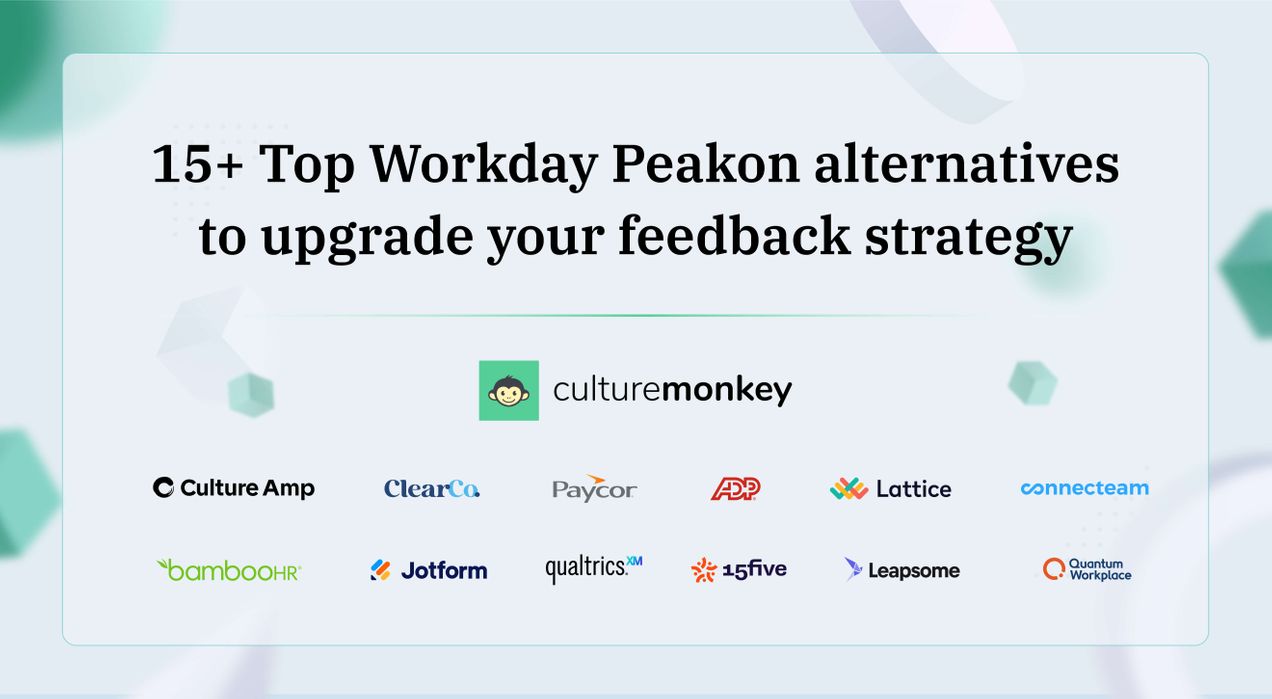25 Best employee feedback tools and apps in 2025: Features, prices, pros, and cons
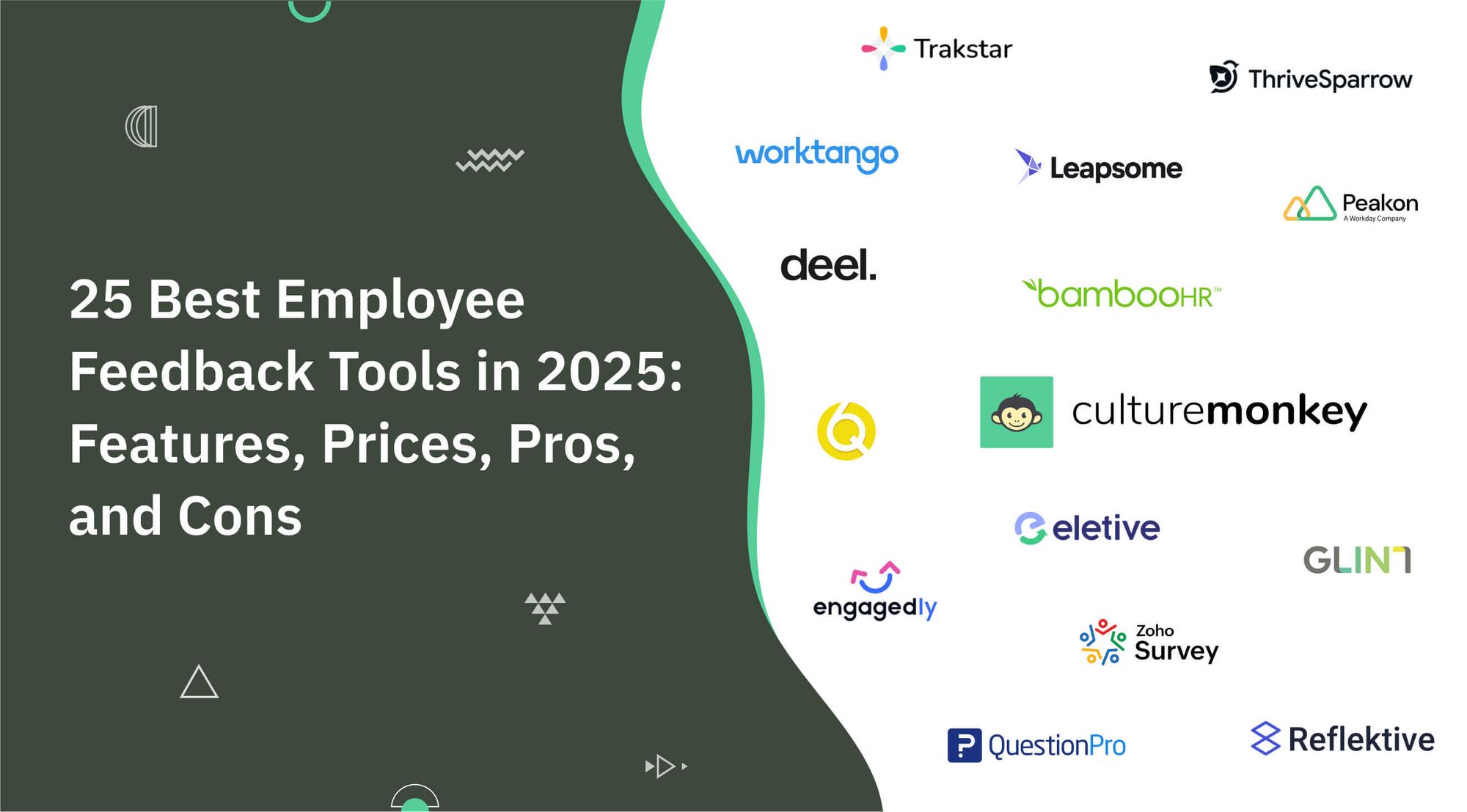
Imagine trying to drive a long-distance road trip without stopping for fuel, checking your tires, or getting directions from your passengers. At first, the journey might go well—smooth roads, good tunes, and everyone’s spirits high.
But without regular check-ins, you’ll eventually run out of gas, hit bumps you didn’t see coming, or get lost on an unfamiliar road. By the end, what could have been a memorable journey becomes a struggle just to keep going.
Employee feedback works the same way for organizations. It’s the regular “fuel” that keeps teams moving forward, the check that everything is running smoothly, and the guidance that helps everyone stay on course.
This is where employee feedback tools come into play. They’re like having a GPS, a fuel gauge, and a pit crew all rolled into one. These tools make it easier to gather honest feedback, identify roadblocks, and fine-tune the journey for everyone. With the right tools, you can ensure that feedback isn’t just collected but acted on, turning insights into positive change. Just like a road trip with nothing but happy memories.
Click here to get to the tools that you are looking for.
Top employee feedback tools at a glance
| Tool | Key Features | Pricing | G2 Rating (out of 5) | Capterra Rating (out of 5) | Pros | Cons |
|---|---|---|---|---|---|---|
| CultureMonkey | Easy survey setup with templates, Multilingual, mobile-friendly surveys, Engagement heatmaps and benchmarking, AI-driven actionable insights | Contact sales | 4.7 | Not available | Customized reports and views by manager level, action planning with stakeholder involvement. | No issues; extremely user-friendly and intuitive. |
| 15five | High-performance check-ins, Objectives and key results (OKRs) | $4/person/month | 4.6 | 4.7 | Easy setup and helpful training modules for upgrades. | No live chat for support; email responses aren't instant. |
| Officevibe | Customizable pulse surveys, Anonymous feedback for openness | $3.50/person/month | 4.3 | 4.6 | Encourages honest feedback, meaningful discussions, and recognition. | High pricing limits features for small businesses. |
| Qualtrics | Real-time feedback alerts, Advanced text analytics | Contact sales | 4.4 | 4.7 | Excellent for data gathering and sentiment insights. | Complex features can overwhelm new users; high cost. |
| TINYpulse | Quick pulse surveys, Real-time feedback | Contact sales | 4.4 | 4.6 | Offers insights into team sentiment, boosting engagement. | Some questions may lack relevance or depth. |
| Quantum Workplace | Customizable feedback surveys, Analytics and reporting tools | Contact sales | 4.4 | 4.7 | User-friendly interface with cool templates for surveys. | Limited admin rights customization; no automated Teams integration. |
| Culture Amp | Tailored feedback surveys, Diversity and inclusion metrics | Contact sales | 4.5 | 4.6 | Intuitive system with punctual notifications for tasks. | Rigid structure limits adaptability for dynamic workflows. |
| ContactMonkey | Targeted internal communications, Real-time pulse surveys | Contact sales | 4.4 | 4 | User-friendly; everything works as expected. | Issues with distribution from multiple senders; manual CSV files needed. |
| Lattice | Continuous feedback tool, Goal setting and track progress | $11/person/month | 4.7 | 4.5 | Customer and account teams feel like an extension of our own. | Customization limits occasionally require manual workarounds. |
| Eletive | Real-time engagement monitoring, Predictive attrition analysis | Contact sales | 4.6 | 4.7 | Easy-to-implement survey with real-time results. | Difficult to get a coherent history due to employee movement. |
| WorkTango | Actionable employee surveys, Recognition and rewards programs | Contact sales | 4.7 | 4.9 | Simplifies recognition, enhancing morale and integration. | Metrics dashboard can be unclear with inconsistent updates. |
| Deel | Global payroll management, HRIS integration | Contact sales | 4.8 | 4.8 | Simplifies international payroll with automated compliance. | High pricing for small teams; occasional lags. |
| ThriveSparrow | 360-degree feedback, AI-driven sentiment analysis | Contact sales | 4.5 | Not available | User-friendly structure and simplicity. | Needs more insights and AI for surveys. |
| Leapsome | Integrated performance modules, Goals and OKR alignment | Contact sales | 4.5 | 4.6 | Quick adaptation, feedback tracking, customizable evaluator options. | Managing numerous feedback pieces can be time-consuming. |
| Questback | Advanced survey creation, Multi-channel feedback collection | Contact sales | 5 | 4.8 | Easy survey creation, export to PPT/Excel. | No notable dislikes; everything functions as expected. |
| Trakstar | Performance appraisals, Learning management integration | Contact sales | 4.3 | 4.4 | Easy module creation and updates. | Persistent glitches affect navigation and progress. |
| Vantage Pulse | Real-time engagement tracking, Customizable survey templates | Contact sales | 4.7 | 4.7 | User-friendly UI; mobile employee feedback app for redemption. | Determining eligibility for offers is challenging. |
| Glint | Real-time pulse surveys, Action planning tools | Contact sales | 4.6 | 4.6 | Precise workplace engagement platform for frontline employee perspectives. | Confidentiality may not be as robust as claimed. |
| Peakon | Continuous feedback collection, Predictive analytics | Contact sales | 4.6 | 4.8 | Comprehensive surveys offering organizational pulse insights. | Interactive survey sessions would enhance engagement. |
| Reflektive | Real-time feedback, 1:1 meeting tracking | Contact sales | 4.2 | 4.1 | Facilitates annual reviews and holistic employee performance evaluation. | Limited integration with other software, clunky Gmail integration. |
| Engagedly | Performance management suite, Learning and development platform | $2/person/month | 4.3 | 4.6 | User impersonation for assistance; innovative management tools. | Can't award multiple badges; limited aesthetics. |
| BambooHR | Centralized employee database, Applicant tracking system | Contact sales | 4.4 | 4.6 | User-friendly onboarding; simplifies small HR tasks. | Performance management module limits question flexibility. |
| Zoho Survey | Diverse question formats, Advanced skip logic | Free trial with limited access | 4.4 | 4.6 | Simple, effective platform for surveys. | Limited branding flexibility; Zoho logo presence. |
| QuestionPro | Employee experience surveys, Real-time feedback software analytics | Free trial with limited access | 4.5 | 4.8 | Wide range of questions for rich data insights. | Deeper settings can be time-consuming to navigate. |
| 6Q | Six-question pulse surveys, Peer recognition system | Free trial with limited access | 3.8 | 5 | Interactive platform for engaging employee feedback. | Low participation rates due to outdated outreach methods. |
Source: G2

Build a culture of trust, by People Science-backed data
- Multi-lingual Surveys
- White-Glove Onboarding
- People Science-Backed Reports
- Enterprise-Grade Security
Table of contents:-
- CultureMonkey
- 15five
- Officevibe
- Qualtrics
- TINYpulse
- Quantum Workplace
- Culture Amp
- ContactMonkey
- Lattice
- Eletive
- WorkTango
- Deel
- ThriveSparrow
- Leapsome
- Questback
- Trakstar
- Vantage Pulse
- Glint
- Peakon
- Reflektive
- Engagedly
- BambooHR
- Zoho Survey
- QuestionPro Workforce
- 6Q
Top 25 best employee feedback tools & software to try in 2025
Here are the list of top 25 best employee feedback tools in the market and their unique features:
CultureMonkey
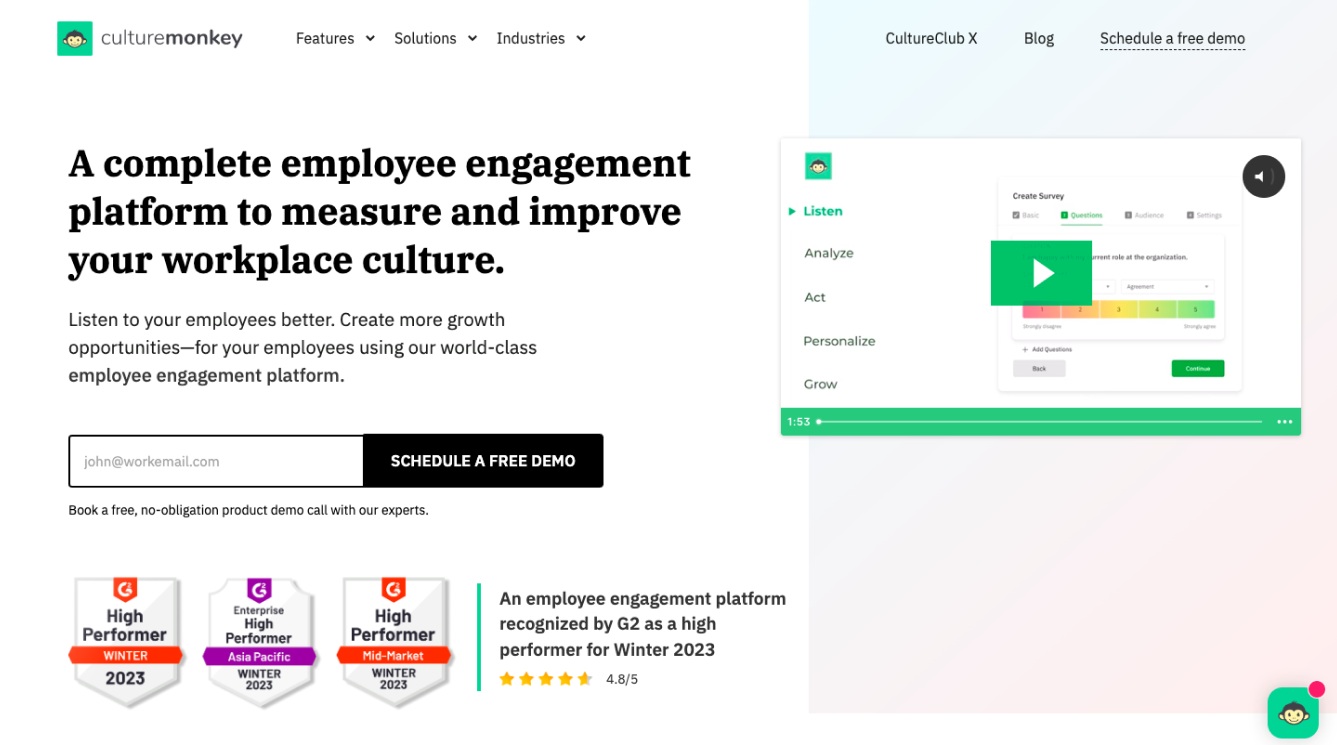
CultureMonkey is an innovative employee feedback tool that enables organizations to gather, analyze, and act on employee feedback in a comprehensive manner.
Our employee feedback tool helps companies improve their workplace culture and employee engagement by identifying key areas of improvement and providing actionable insights.
Our platform offers a range of customizable employee survey templates and mobile-friendly forms, making it easy for HR professionals and managers to launch surveys and track employee feedback across the entire employee lifecycle.
| Feature | Advantages |
|---|---|
| Launch employee engagement surveys quickly | Simplifies survey creation with an intuitive interface, making it easy to customize and deploy employee engagement surveys for quick and actionable feedback. |
| 50+ Ready-to-use, customizable employee survey templates | Provides pre-built, research-backed, 50+ anonymous templates with full customization options, enabling organizations to create tailored and impactful surveys quickly. |
| HRMS integration for streamlined employee feedback collection | Seamlessly integrates with leading HRMS platforms like Darwinbox, Zoho People, Okta, SAP, Keka, and more, for synchronized employee data, making it easy to launch customized surveys and gain real-time insights. |
| User-friendly, multilingual mobile employee surveys | Maximizes survey reach and participation with multilingual, mobile-friendly surveys that integrate with Slack, Teams, WhatsApp, and more |
| Enable anonymous employee conversations | Promotes open, honest communication while maintaining anonymity, fostering trust and boosting engagement between employees and management. |
| Lifecycle surveys for every stage of the employee journey | Provides targeted employee feedback throughout key milestones in the employee journey, enabling HR to enhance engagement and improve experiences. |
| Employee engagement score heat maps for quick insights | Offers visual representation of engagement metrics, helping organizations quickly identify strengths and weaknesses and compare with industry benchmarks. |
| Customizable, easy-to-read employee survey reports | Allows HR teams to filter and analyze survey data, generating actionable insights that support informed decisions and enhance engagement efforts. |
| Identify key employee issues quickly with GPT tools | Quickly analyzes feedback themes and top keywords, enabling HR to prioritize issues and develop targeted solutions. |
| Sentiment analysis for real-time employee feedback | Automatically classifies feedback sentiment, providing deep insights into employee emotions by department or demographic for effective responses. |
| Manager effectiveness feedback through employee surveys | Identifies areas for manager improvement and reduces attrition risks through employee-driven feedback and data-driven insights. |
| AI-backed actionable employee engagement insights | Highlights key themes and trends in feedback, offering actionable recommendations for HR teams to quickly address concerns and drive engagement. |
| Culture-driven workplace transformation with AI-led People Science | Combines data-driven strategies and human insights to transform workplace culture with guided interpretation and impactful actions. |
| Text intelligence for in-depth qualitative employee feedback analysis | Analyzes open-ended survey responses to uncover hidden themes and motivations, enabling a deeper understanding of employee concerns. |
| Dedicated personalized support throughout your engagement journey | Provides ongoing assistance for survey implementation and engagement optimization, ensuring meaningful feedback and continuous improvement. |
| Track engagement trends over time with historical data | Utilizes historical data to identify engagement patterns and inform data-driven decisions, improving workforce engagement over time. |
| Simplified, secure employee login with Single Sign-On (SSO) | Enhances security and simplifies employee access, increasing engagement and survey participation with minimal friction. |
| Custom, tailored employee survey reports | Delivers reports tailored to organizational needs, providing targeted insights to drive strategic action and improve engagement. |
| Customizable access controls for data security | Offers flexible account-level access for different stakeholders, ensuring secure and appropriate access to critical engagement data. |
Learn more about CultureMonkey

15five
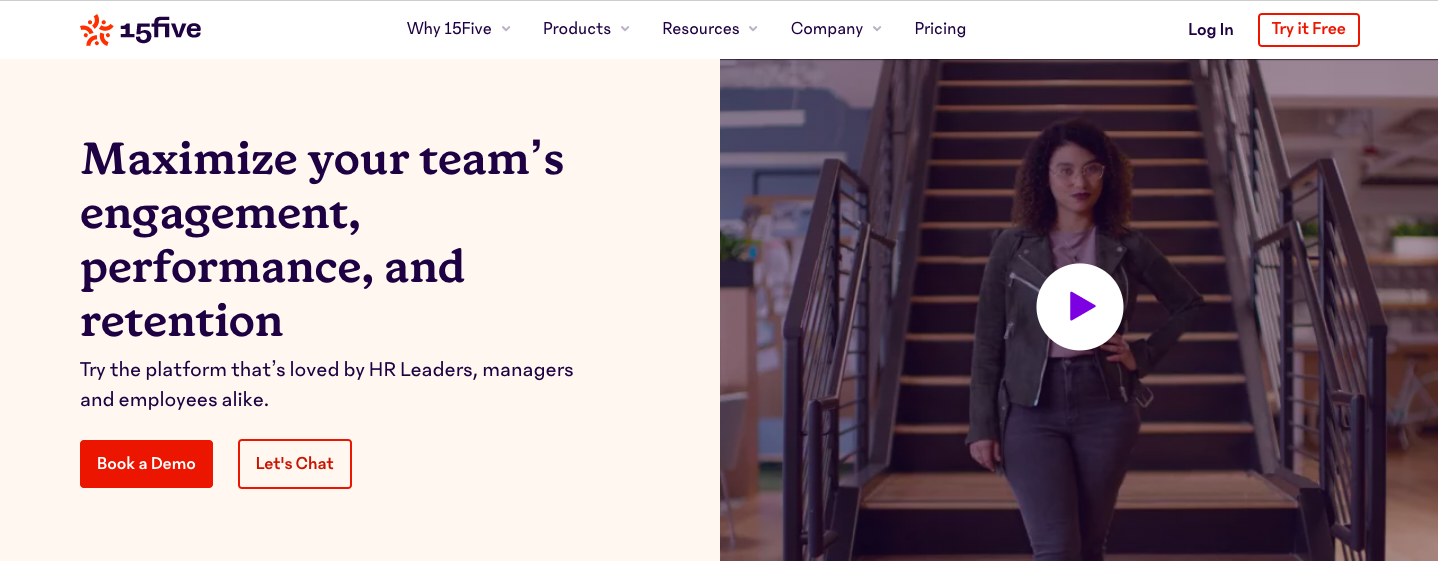
| Feature | Advantages |
|---|---|
| High-performance check-ins | Enables regular employee-manager check-ins to build trust, align goals, and uncover challenges, fostering stronger relationships and continuous improvement. |
| Objectives & key results (OKRs) | Helps set and track measurable goals, aligning individual and team efforts with organizational objectives for better goal achievement. |
| Pulse feedback surveys | Offers regular sentiment checks, helping identify emerging issues and enabling proactive interventions to enhance engagement and satisfaction. |
| Performance reviews | Facilitates data-driven reviews to set development goals, provide actionable feedback, and track performance, progress, driving improved performance. |
| Best-self review | Provides 360-degree feedback, allowing employees to receive input from peers, managers, and reports to better understand their strengths and growth areas. |
Source: https://www.15five.com/
Officevibe
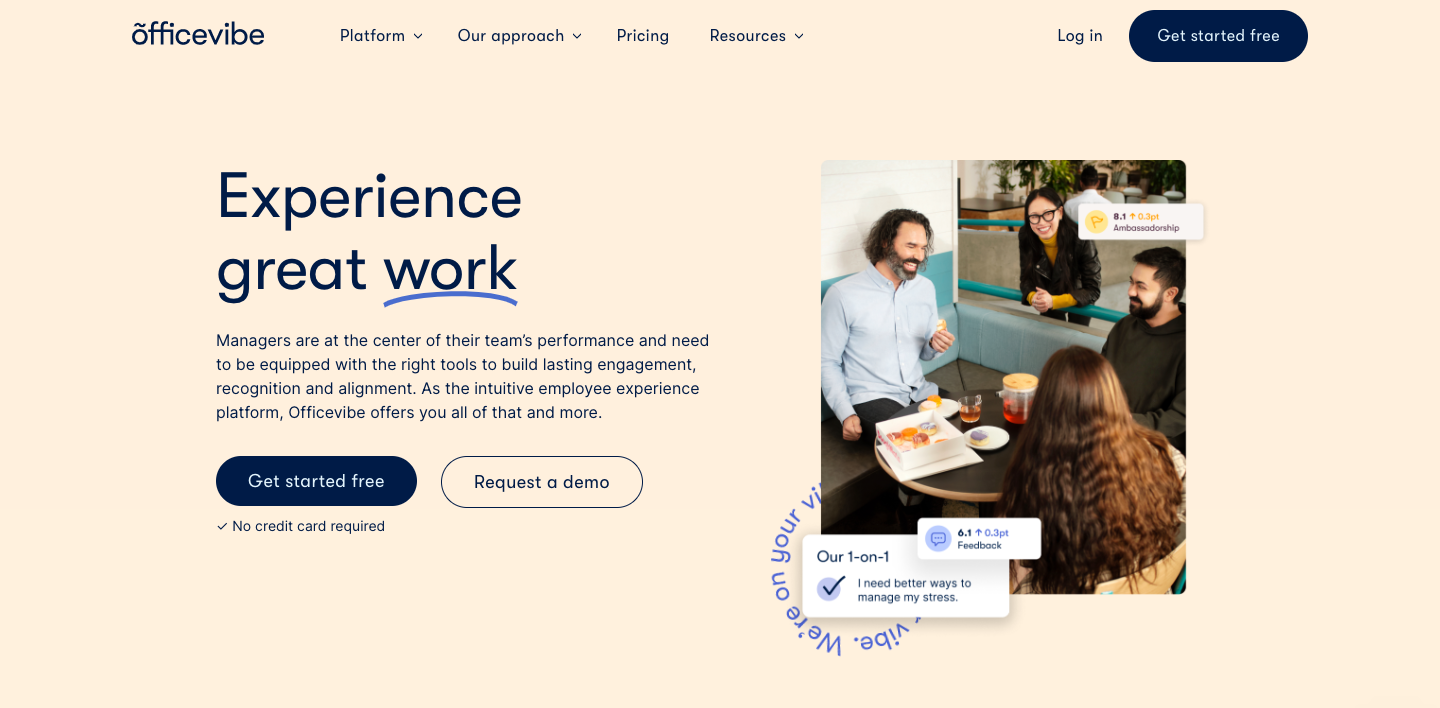
| Feature | Advantages |
|---|---|
| Pulse surveys | Customizable, quick surveys that gather insights on engagement, culture, and leadership, enabling informed decisions to enhance workplace dynamics. |
| Anonymous feedback | Encourages honest communication by allowing anonymous feedback, helping to address sensitive issues and build trust. |
| Manager tools | Equips managers with coaching resources, feedback tips, and training programs to improve leadership and team relationships. |
| Recognition | Boosts morale and engagement by enabling employees to publicly recognize and celebrate each other's achievements with badges and awards. |
| Actionable insights | Provides real-time, data-driven insights into engagement and satisfaction, empowering organizations to implement meaningful change. |
Source: https://www.officevibe.com/
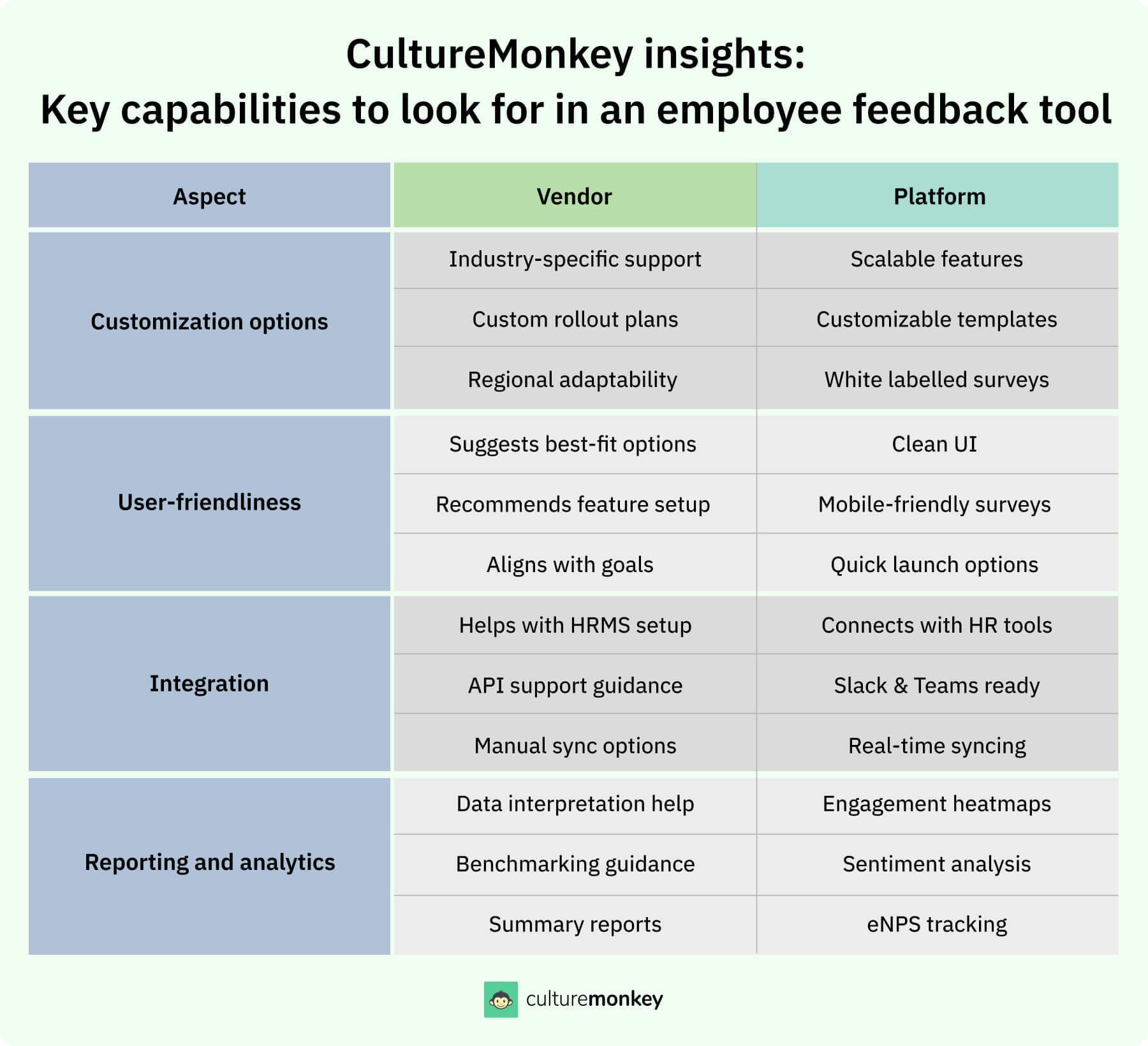
Looking to dive deeper? Click here to read more.
Qualtrics
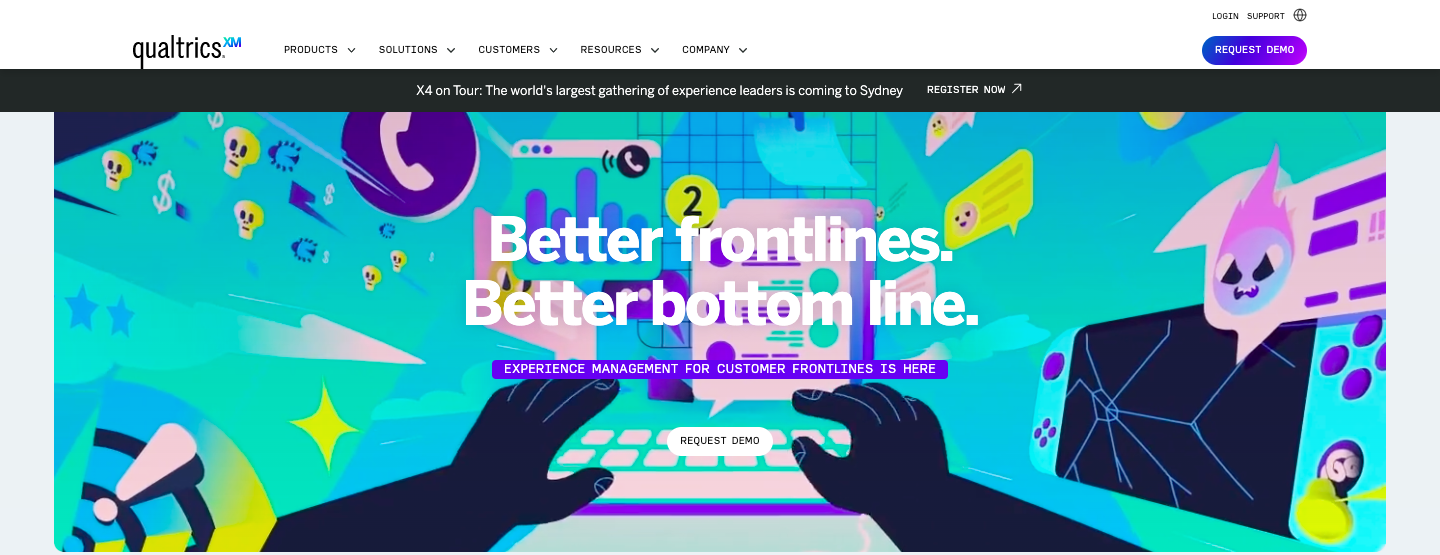
| Feature | Advantages |
|---|---|
| Real-time feedback | Delivers immediate alerts on critical issues, allowing leaders to take swift, effective action. |
| Pulse surveys | Offers pre-built templates for quick feedback collection, enabling organizations to measure employee sentiment frequently. |
| Text analytics | Analyzes open-ended responses to identify themes and trends, providing deeper insights into employee feedback. |
| Action planning | Enables creation, tracking, and management of action plans to address feedback, fostering accountability and continuous improvement. |
| Employee engagement measurement | Offers comprehensive tools to measure engagement levels and identify areas for improvement, driving targeted engagement strategies. |
Source: https://www.qualtrics.com/
TINYpulse (WebMD Health Services)
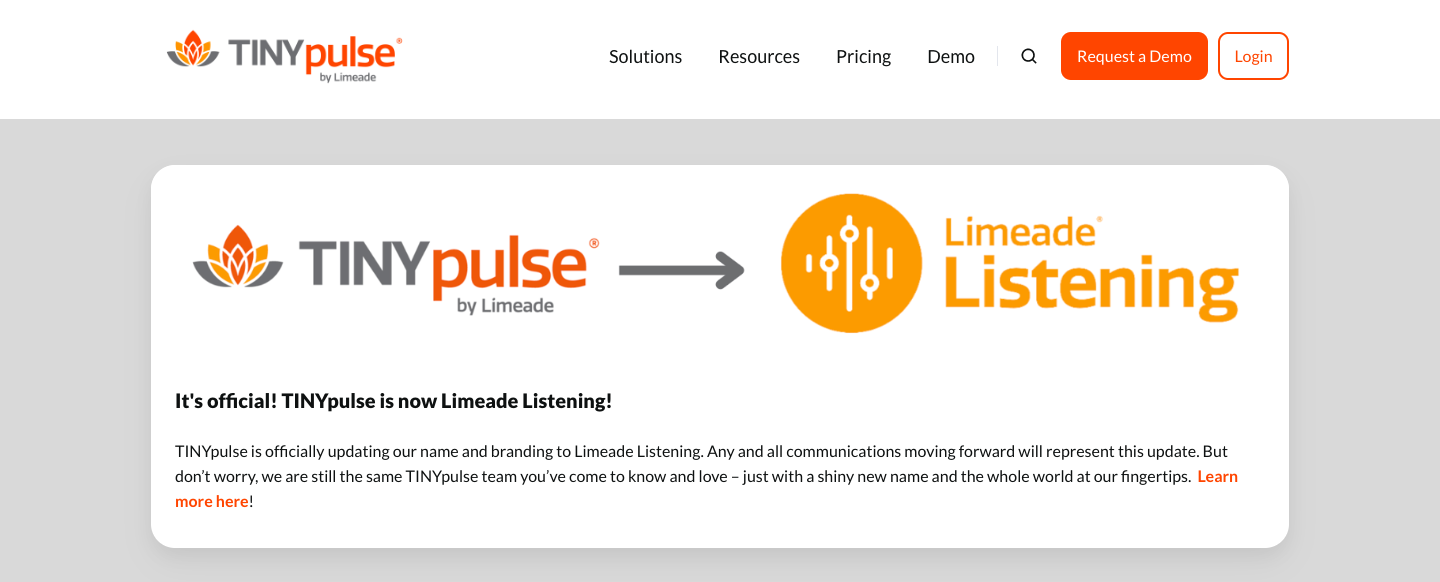
| Feature | Advantages |
|---|---|
| Pulse surveys | Quick, easy surveys for measuring engagement and satisfaction, enabling organizations to gather actionable feedback efficiently. |
| Real-time feedback | Allows managers to receive and respond to feedback promptly, fostering a responsive and adaptive work culture. |
| Anonymous feedback | Promotes honest and open communication without fear of retaliation, leading to transparent discussions and actionable insights. |
| Customizable surveys | Tailor surveys to specific needs, ensuring targeted feedback on the most relevant issues. |
| Employee recognition | Enhances morale and motivation through public recognition and rewards, creating a culture of appreciation. |
Source: https://www.webmdhealthservices.com/
Quantum Workplace
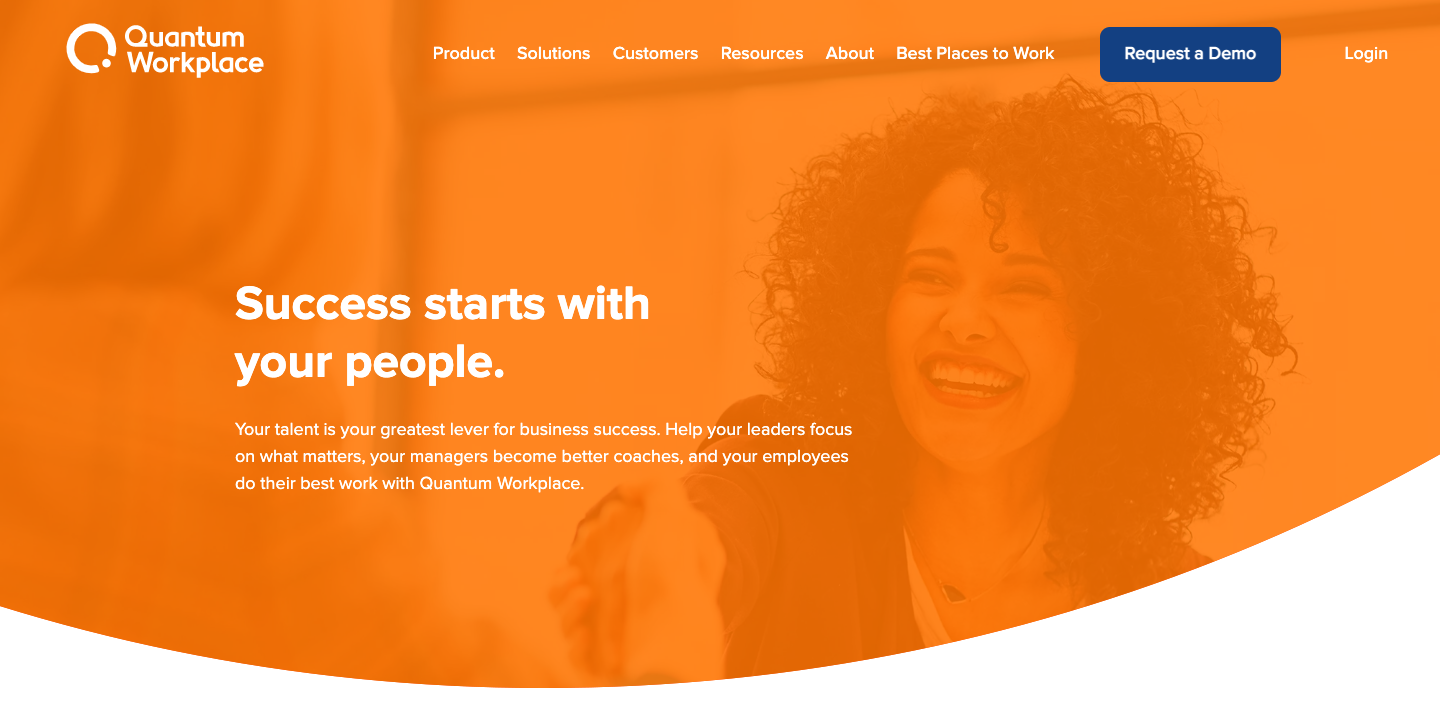
| Feature | Advantages |
|---|---|
| Employee feedback surveys | Provides a comprehensive view of organizational culture and employee happiness, with customizable surveys for tailored insights. |
| Pulse surveys | Tracks employee sentiment over time with shorter, frequent surveys to gauge and respond to changing dynamics. |
| Performance reviews | Sets goals, tracks progress, and facilitates feedback for ongoing performance development and alignment. |
| Action planning | Supports the creation and execution of plans to address feedback, driving accountability and improvement. |
| Analytics | Offers robust reporting capabilities to analyze feedback data and track engagement progress, guiding data-driven strategies. |
Source: https://www.quantumworkplace.com/
Culture Amp
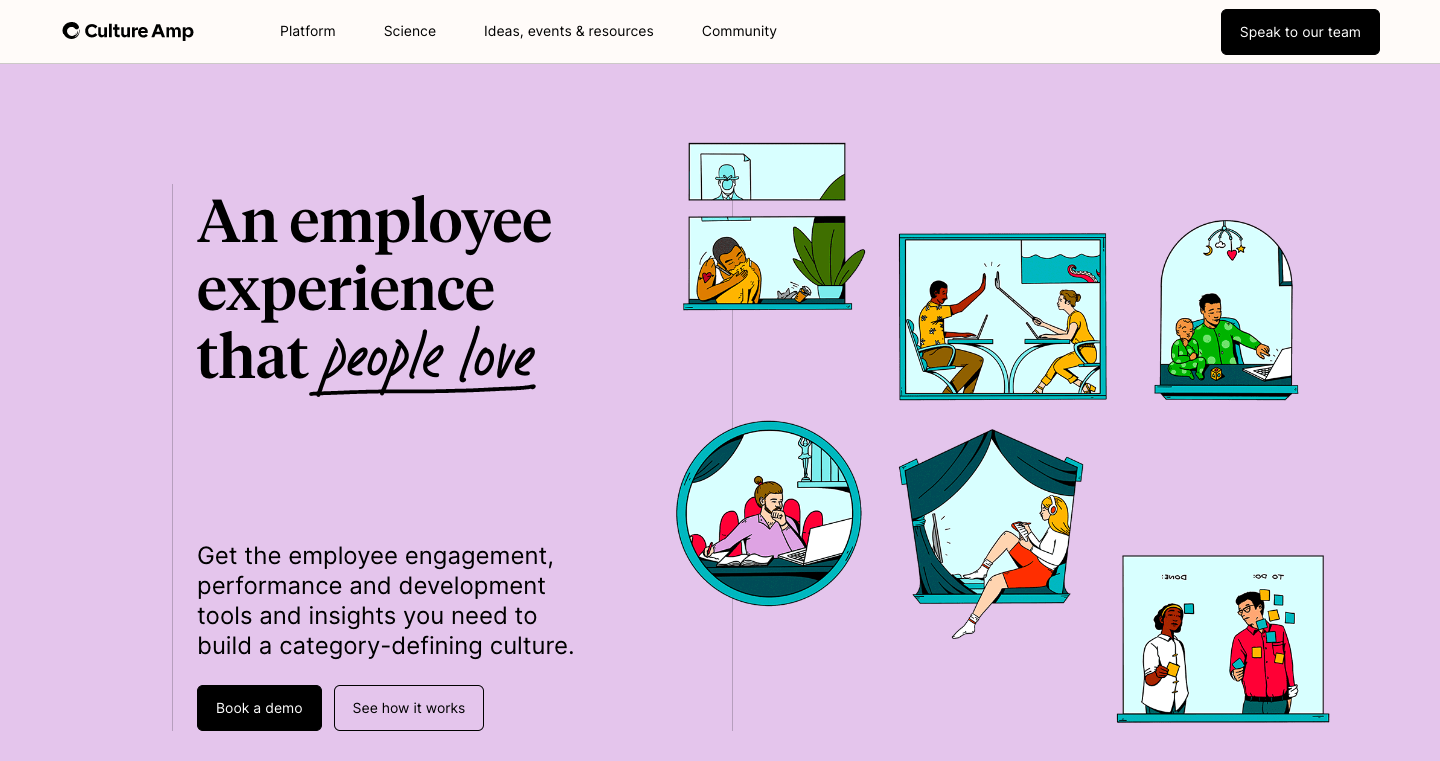
| Feature | Advantages |
|---|---|
| Employee feedback surveys | Customizable surveys tailored to specific groups for in-depth insights into job satisfaction, manager effectiveness, and more. |
| Actionable insights | Uses advanced analytics tools to improve employee performance with key metrics, enabling targeted improvements in engagement. |
| Performance reviews | Offers tools for ongoing feedback, coaching, and goal tracking, fostering continuous performance improvement. |
| Diversity, Equity, and Inclusion (DEI) | Provides metrics and resources to measure and promote workplace diversity and inclusion. |
| Employee lifecycle | Supports feedback collection throughout every stage of the employee journey, enhancing the overall experience. |
Source: https://www.cultureamp.com/
ContactMonkey
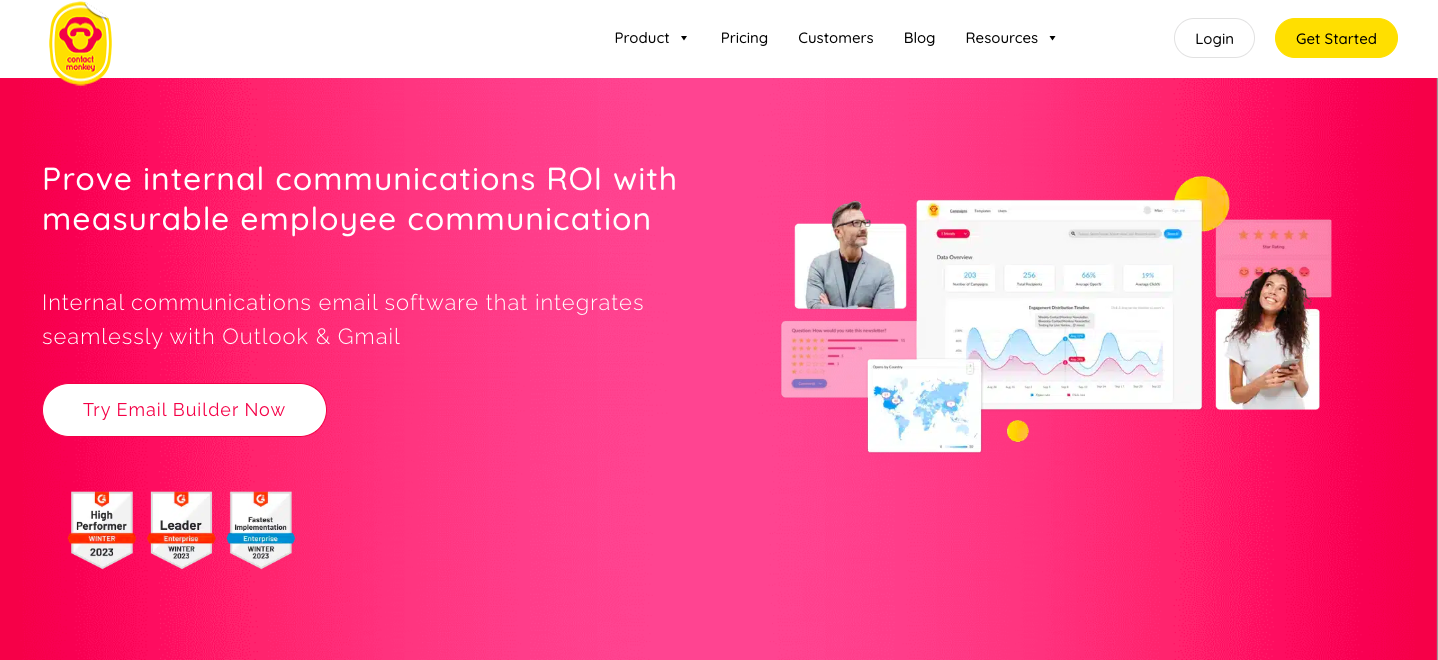
| Feature | Advantages |
|---|---|
| Communication | Allows targeted internal communications, tracking engagement, and creating professional emails using a drag-and-drop builder. |
| Pulse surveys | Quickly creates and distributes surveys to gather real-time feedback on job satisfaction, culture, and engagement. |
| Employee Net Promoter Score (eNPS) | Measures employee loyalty and satisfaction, offering key insights for workplace improvements. |
| Feedback analytics | Provides real-time insights into employee engagement, sentiment, and behavior for data-driven decisions. |
| Integrated with Outlook and Gmail | Seamlessly integrates with email clients, making communication and survey distribution simple and effective. |
Source: https://www.contactmonkey.com/
Lattice
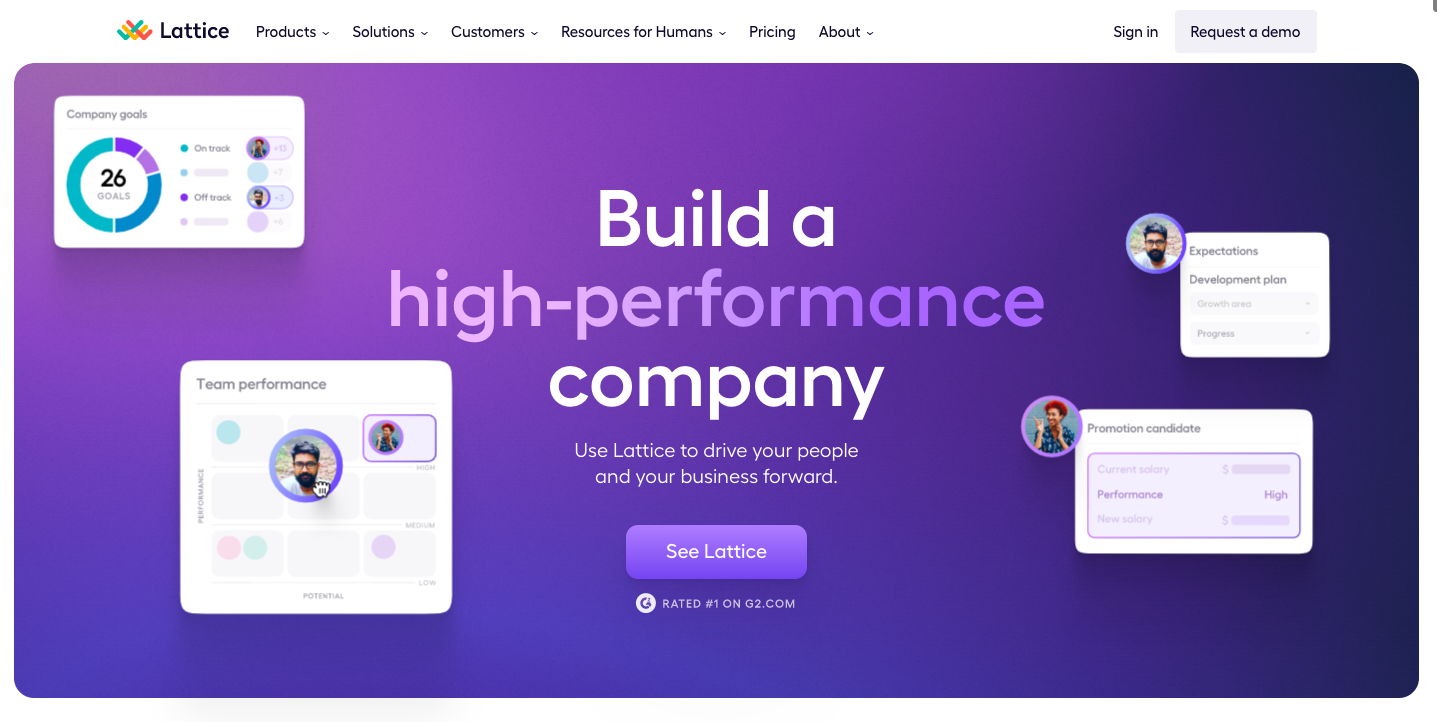
| Feature | Advantages |
|---|---|
| Continuous feedback | Enables real-time feedback between employees and managers, promoting frequent, actionable conversations for growth and improvement. |
| Goal setting and tracking | Helps align individual goals with organizational objectives, providing clarity and purpose while tracking progress. |
| Performance reviews | Customizable reviews that track employee performance, offer peer feedback and align with organizational needs. |
| 360-degree feedback | Collects feedback from multiple sources, giving a holistic view of performance and areas for development. |
| Employee engagement surveys | Conducts engagement surveys to measure and improve workplace satisfaction and productivity. |
Source: https://lattice.com/
Eletive
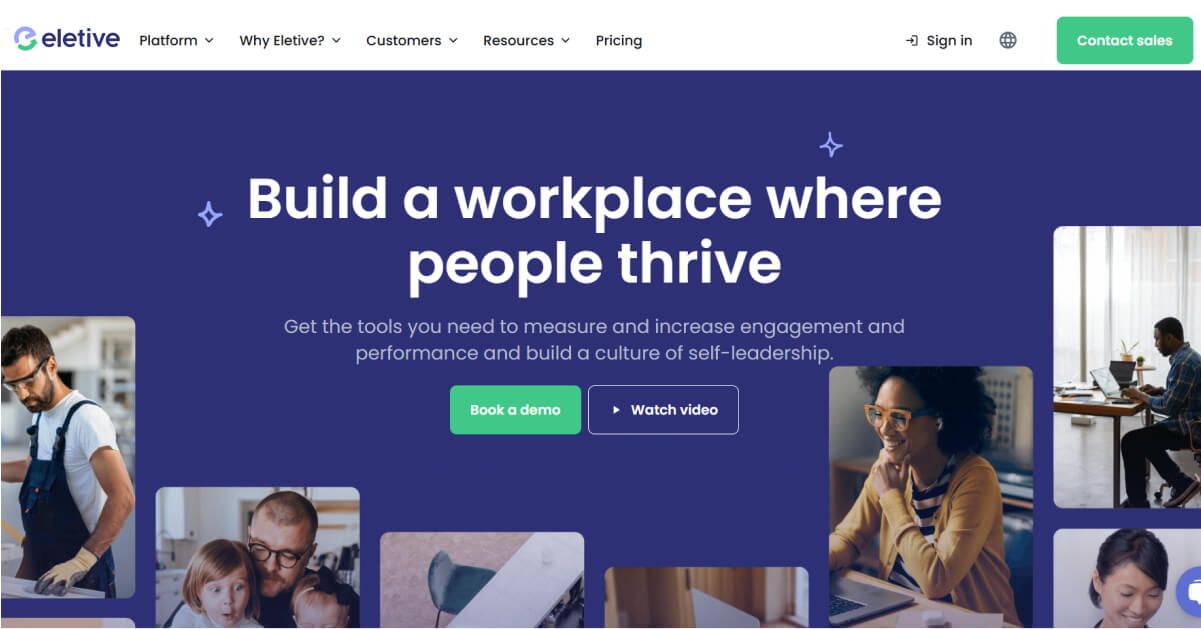
| Feature | Advantages |
|---|---|
| Real-Time Pulse Surveys | Continuously monitor employee engagement levels, allowing for immediate identification and response to emerging issues. |
| Survey Intelligence | Utilize advanced analytics to gain deep insights into survey data, enabling data-driven decision-making to enhance workplace culture. |
| Intuitive Heatmaps and Dashboards | Visualize engagement metrics through user-friendly heatmaps and dashboards, facilitating to identify trends and areas needing attention. |
| Attrition Prediction | Predict potential employee turnover by analyzing engagement data, allowing proactive measures to retain talent. |
| AI-Enhanced Analytics | Leverage artificial intelligence to analyze feedback, uncovering hidden patterns and sentiments for more effective engagement strategies. |
Source: https://eletive.com/
WorkTango
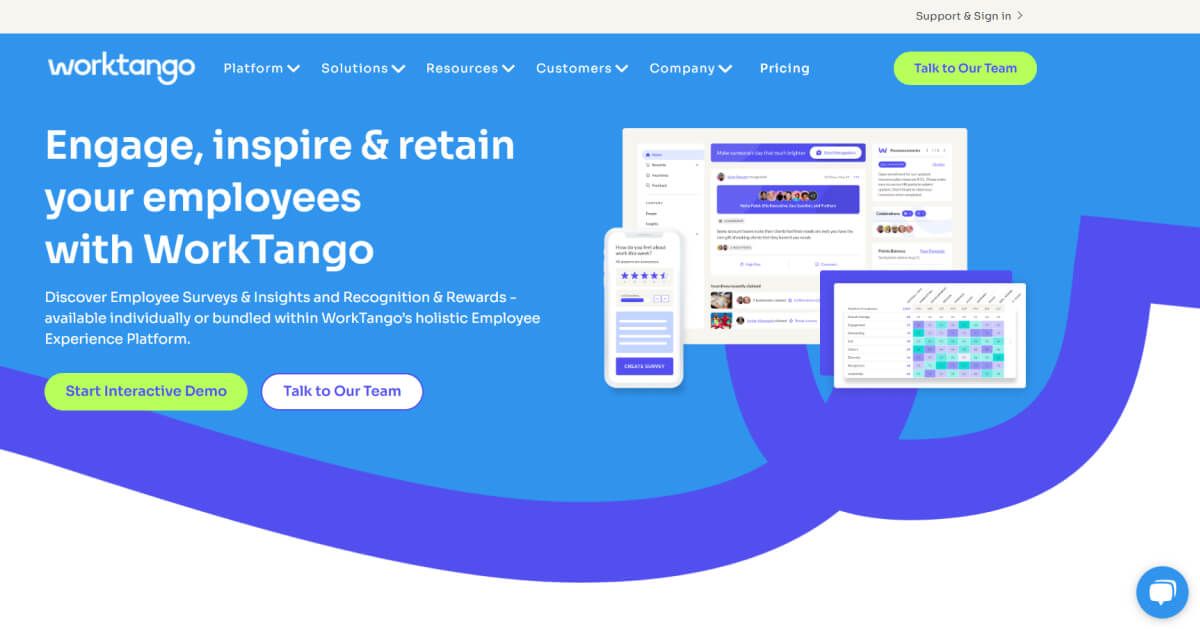
| Feature | Advantages |
|---|---|
| Employee Surveys & Insights | Collect comprehensive feedback across the employee lifecycle, providing leaders with actionable insights to drive meaningful change. |
| Recognition & Rewards | Automate and scale recognition programs to celebrate achievements, boosting morale and reinforcing desired behaviors. |
| Anonymous Conversations | Facilitate open dialogue by allowing employees to provide candid feedback anonymously, fostering a culture of transparency and trust. |
| Action Planning | Empower managers with tools to create, track, and manage action plans based on feedback, ensuring accountability and continuous improvement. |
| Leader Tools | Provide leaders with resources and insights to effectively respond to feedback, enhancing their ability to lead and engage their teams. |
Source: https://www.worktango.com/
Deel
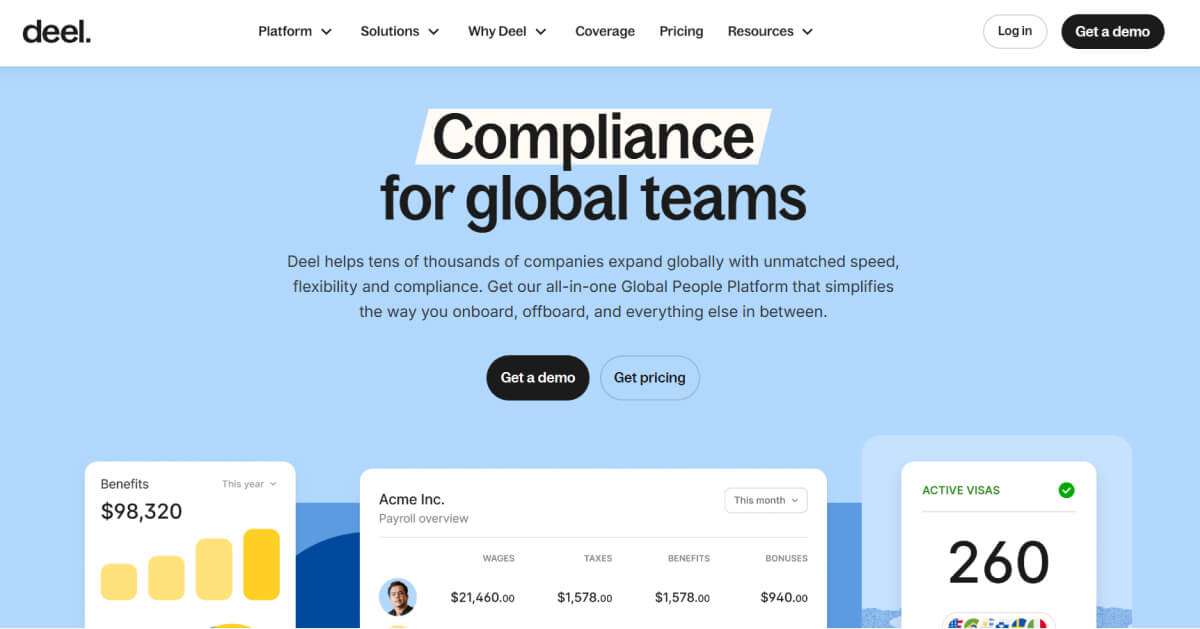
| Feature | Advantages |
|---|---|
| Global Payroll | Manage payroll for employees and contractors worldwide, ensuring compliance with local regulations and simplifying international payments. |
| Compliance and Legal Support | Access expertise to navigate complex employment laws across different countries, reducing legal risks associated with global hiring. |
| Hiring and Onboarding | Streamline the recruitment and onboarding process for global teams, providing a seamless experience for new hires regardless of location. |
| HRIS Integration | Integrate with existing HR systems to centralize employee data, improving efficiency and accuracy in HR operations. |
Source: https://www.deel.com/
ThriveSparrow
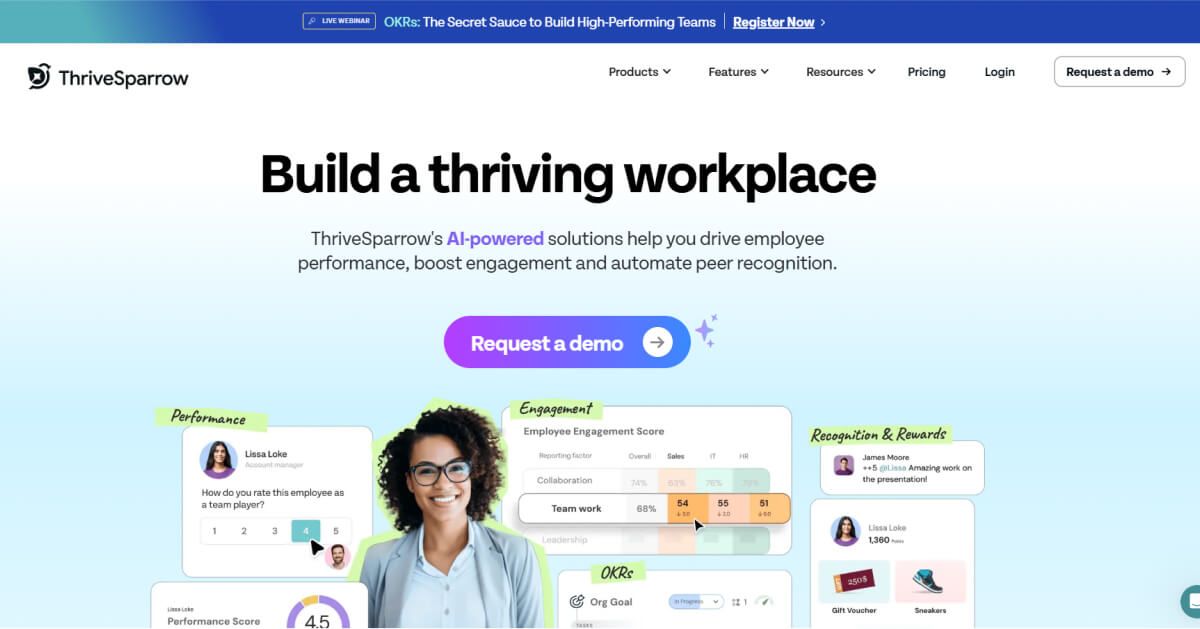
| Feature | Advantages |
|---|---|
| 360-Degree Feedback | Facilitate comprehensive performance reviews by gathering feedback from peers, managers, and direct reports, promoting holistic employee development. |
| Action Plans | Translate feedback into targeted action plans, enabling employees and managers to collaboratively address areas for improvement. |
| Sentiment Analysis | Utilize AI-driven sentiment analysis to interpret employee feedback, providing deeper insights into workforce morale and engagement levels. |
| Multilingual Surveys | Conduct surveys in multiple languages to accommodate diverse workforces, ensuring inclusivity and higher participation rates. |
| Rewards Marketplace | Recognize and reward employees through a comprehensive rewards marketplace, enhancing motivation and reinforcing positive behaviors. |
Source: https://www.thrivesparrow.com/
Leapsome
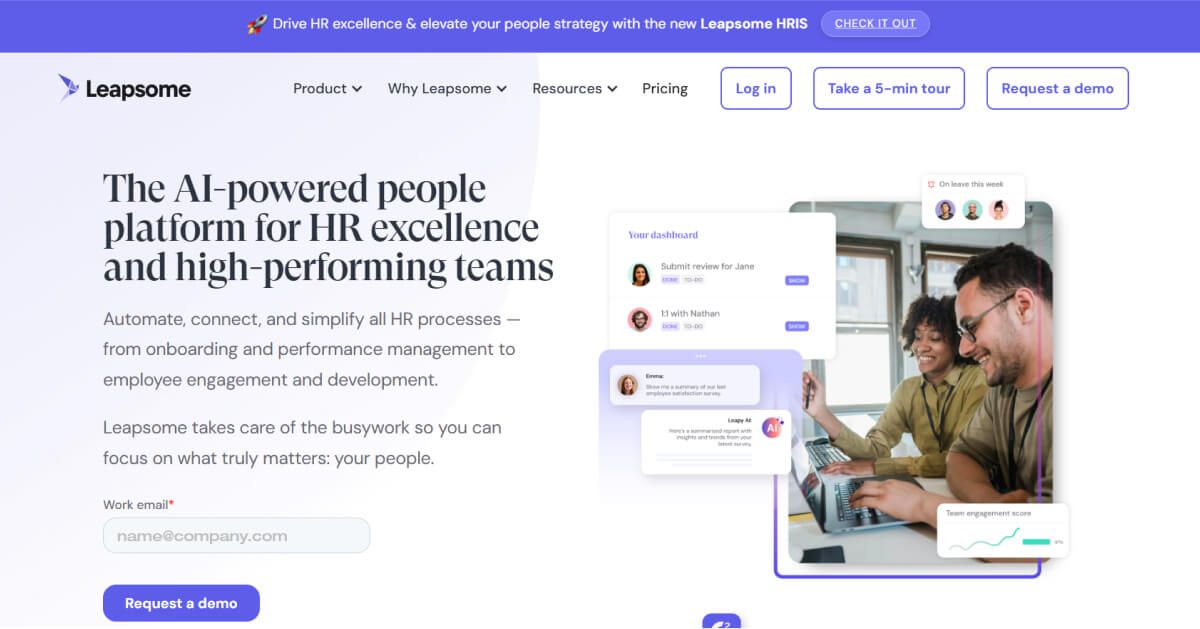
| Feature | Explanation |
|---|---|
| Integrated Performance and Learning Modules | Combines performance reviews with personalized learning paths, fostering continuous employee development and skill enhancement. |
| Goals and OKR Management | Aligns individual and team objectives with company goals, promoting transparency and accountability across the organization. |
| Instant Feedback and Praise | Encourages a culture of continuous feedback and recognition, enhancing employee motivation and engagement. |
| 1-on-1 Meeting Agendas | Provides structured templates for regular meetings, facilitating meaningful conversations and effective follow-ups between managers and employees. |
| Customizable Competency Frameworks | Allows organizations to define and assess role-specific competencies, supporting targeted development and career progression. |
Source: https://www.leapsome.com/
Questback
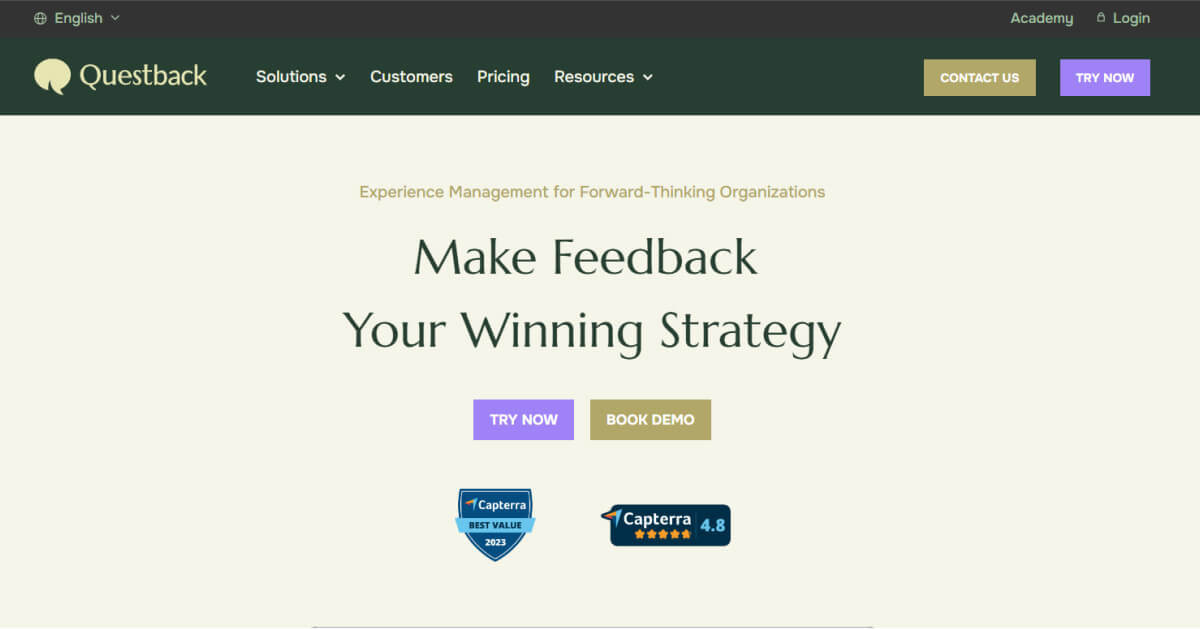
| Feature | Explanation |
|---|---|
| Advanced Survey Design and Distribution | Offers flexible survey creation with various question types and distribution methods, enabling tailored feedback collection. |
| Real-Time Reporting and Analytics | Provides immediate access to survey results with dynamic dashboards, facilitating prompt analysis and decision-making. |
| Multi-Channel Feedback Collection | Another employee feedback platform that supports feedback gathering through multiple channels, including email, web, and mobile, increasing response rates and inclusivity. |
| Data Security and Compliance | Ensures high standards of data protection and compliance with regulations, safeguarding respondent information and organizational integrity. |
| Professional Services and Support | Offers expert guidance and support throughout the feedback process, enhancing the effectiveness of survey initiatives. |
Source: https://www.questback.com/
Trakstar
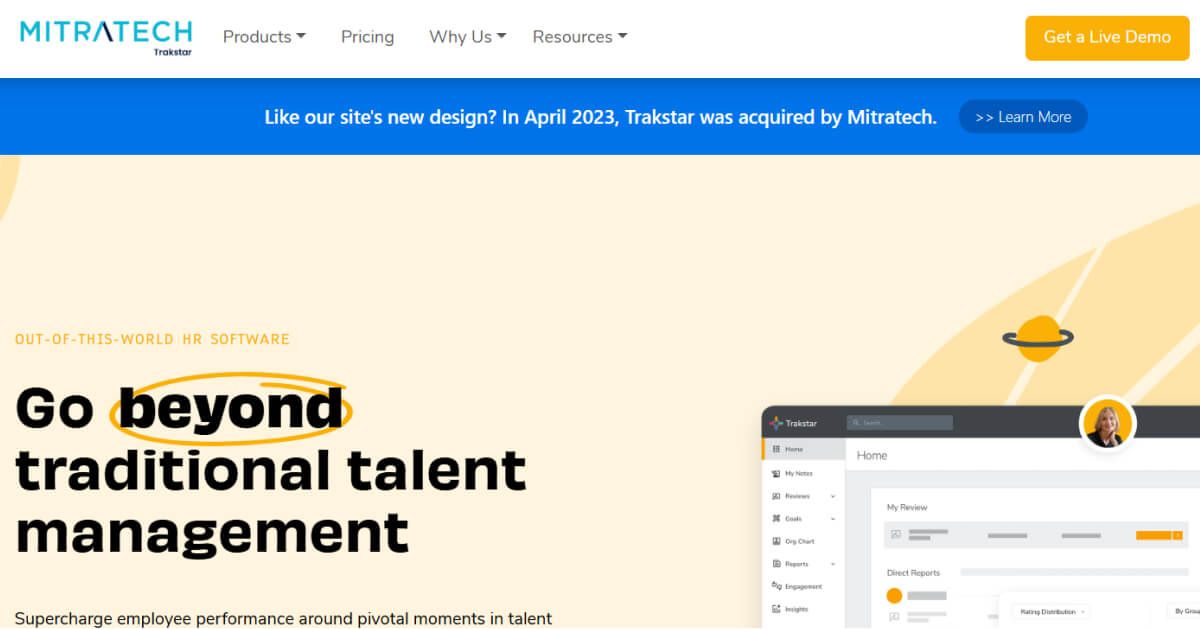
| Feature | Explanation |
|---|---|
| Comprehensive Performance Appraisal System | Facilitates structured performance evaluations with customizable templates, supporting consistent and fair assessments. |
| 360-Degree Feedback | Enables multi-source feedback collection, providing a holistic view of employee performance and development areas. |
| Goal Setting and Tracking | Assists in defining, monitoring, and achieving individual and team goals, aligning efforts with organizational objectives. |
| Employee Engagement Surveys | Conducts surveys to gauge employee satisfaction and engagement, informing strategies to improve workplace culture. |
| Learning Management Integration | Integrates with learning platforms to deliver training and development resources, promoting continuous skill advancement. |
Source: https://www.trakstar.com/
Vantage Pulse
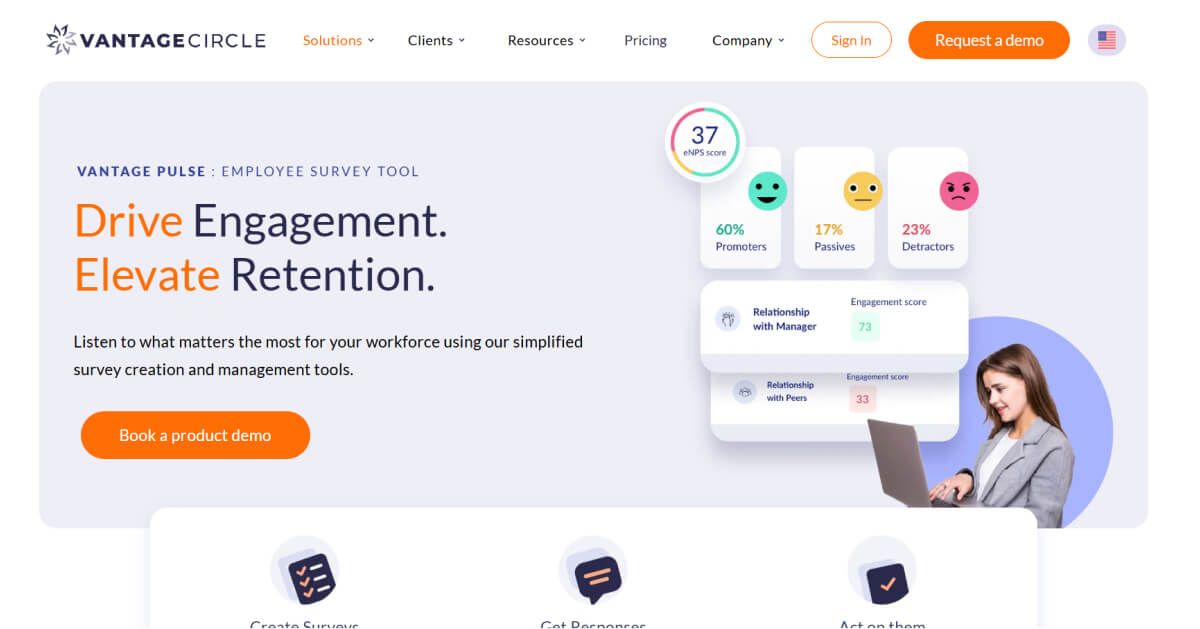
| Feature | Explanation |
|---|---|
| Real-Time Employee Engagement Tracking | Continuously monitors engagement levels, allowing for timely interventions to address emerging concerns. |
| Anonymous Feedback Mechanism | Ensures confidentiality, encouraging honest and open employee input without fear of reprisal. |
| Customizable Survey Templates | Provides a variety of pre-built templates that can be tailored to specific organizational needs, streamlining the feedback process. |
| Actionable Insights and Recommendations | Delivers clear, data-driven insights with suggested actions, enabling organizations to effectively address identified issues. |
| Benchmarking and Trend Analysis | Offers comparative analysis against industry standards and tracks engagement trends over time, supporting informed decision-making. |
Source: https://www.vantagecircle.com/products/employee-surveys/
Microsoft Viva Glint
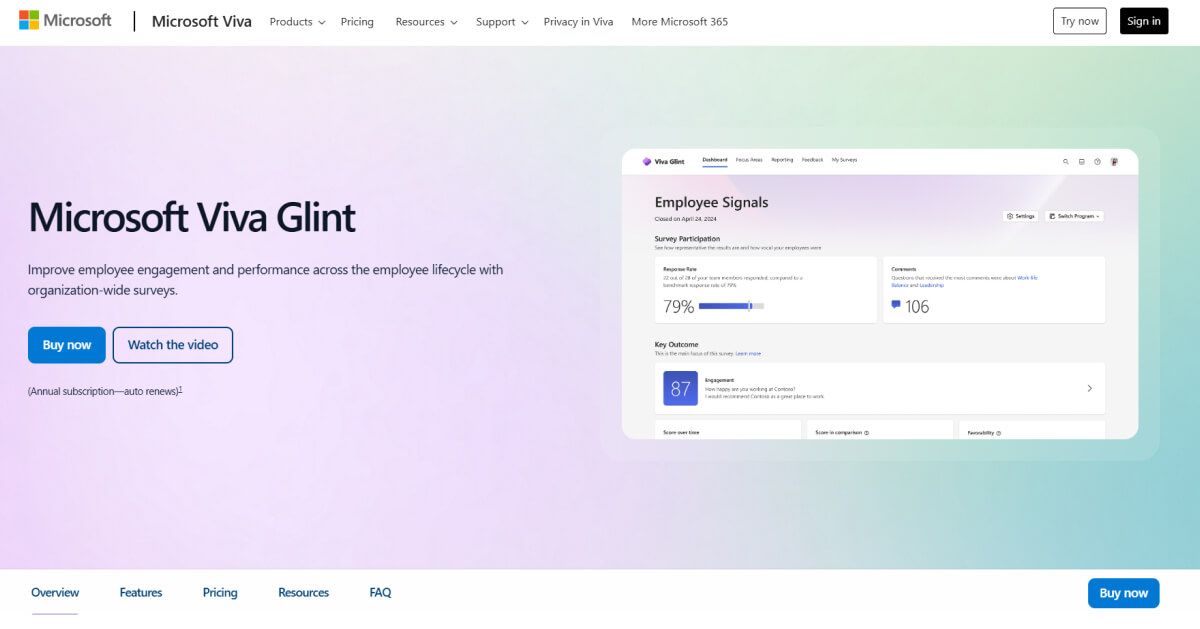
| Feature | Explanation |
|---|---|
| Real-Time Pulse Surveys | Continuously monitor employee engagement levels, allowing for immediate identification and response to emerging issues. |
| AI-Driven Analytics | Utilize artificial intelligence to analyze feedback, uncovering hidden patterns and sentiments for more effective engagement strategies. |
| Integrated Action Planning | Provides tools for managers to create, track, and manage action plans based on feedback, ensuring accountability and continuous improvement. |
| Employee Lifecycle Surveys | Offers surveys tailored to various stages of the employee journey, providing insights into onboarding, development, and exit processes. |
| Manager Effectiveness Reports | Delivers insights into managerial performance based on employee feedback, aiding in leadership development and team dynamics. |
Source: https://www.microsoft.com/en-in/microsoft-viva/glint
Workday Peakon
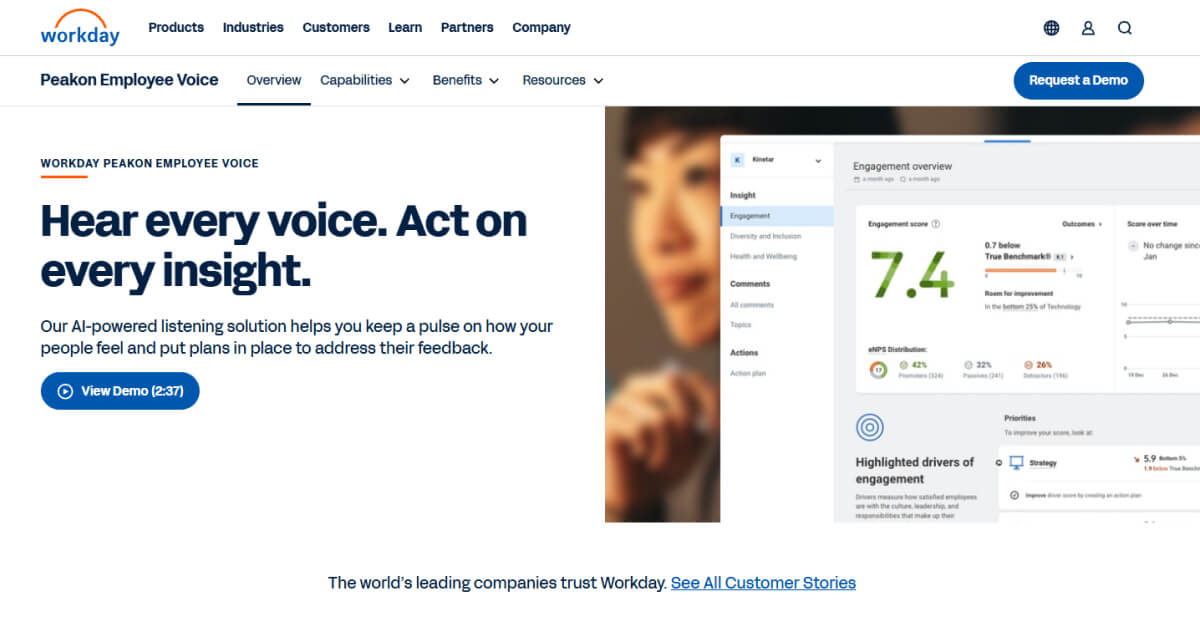
| Feature | Explanation |
|---|---|
| Continuous Listening Platform | Also an employee feedback platform that enables ongoing collection of workplace feedback, providing a dynamic understanding of engagement levels. |
| Predictive Analytics | Utilizes machine learning to predict trends and outcomes, allowing proactive measures to enhance employee experience. |
| Personalized Insights for Managers | Offers tailored reports and recommendations for managers, facilitating targeted actions to improve team engagement. |
| Diversity and Inclusion Metrics | Provides analytics on diversity and inclusion, helping organizations foster a more inclusive workplace. |
| Employee Net Promoter Score (eNPS) | Measures employee loyalty and satisfaction, offering key insights for workplace improvements. |
Source: https://www.workday.com/en-us/products/employee-voice/overview.html
Reflektive
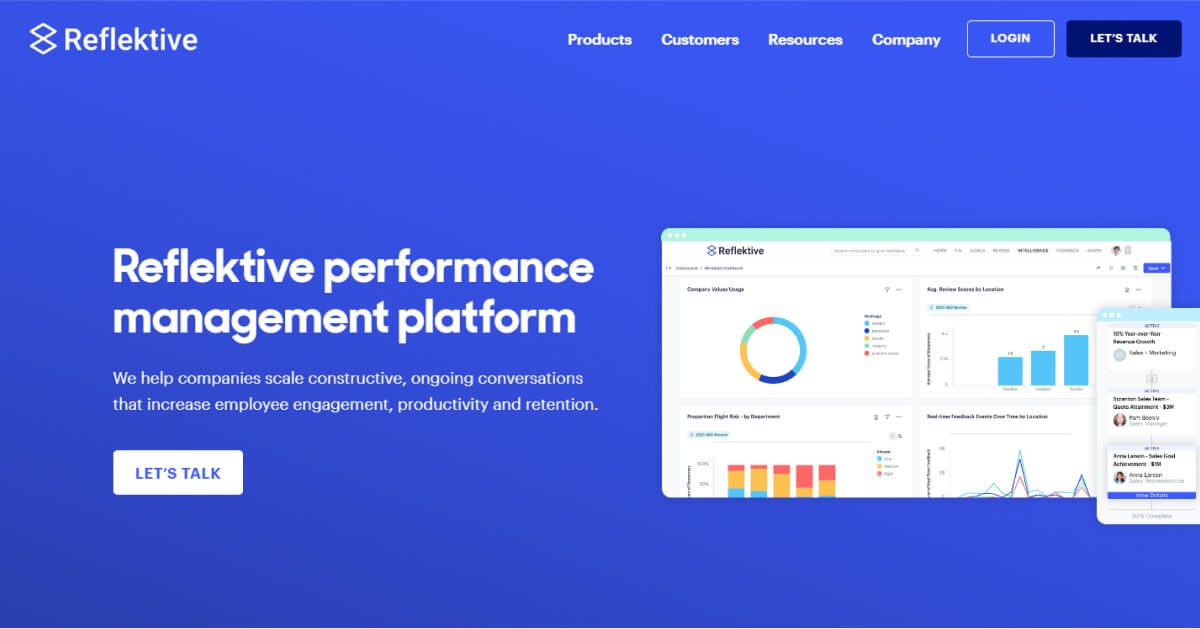
| Feature | Explanation |
|---|---|
| Real-Time Feedback and Recognition | Facilitates immediate feedback and recognition among employees, promoting a culture of continuous improvement and appreciation. |
| Goal Management and Alignment | Assists in defining, monitoring, and achieving individual and team goals, aligning efforts with organizational objectives. |
| Performance Reviews and Check-Ins | Supports structured performance evaluations and regular check-ins, fostering consistent and fair assessments. |
| 1:1 Meeting Agendas and Tracking | Provides structured templates for regular meetings, facilitating meaningful conversations and effective follow-ups between managers and employees. |
| People Analytics and Reporting | Offers robust reporting capabilities to analyze feedback data and track engagement progress, guiding data-driven strategies. |
Source: https://www.reflektive.com/
Engagedly
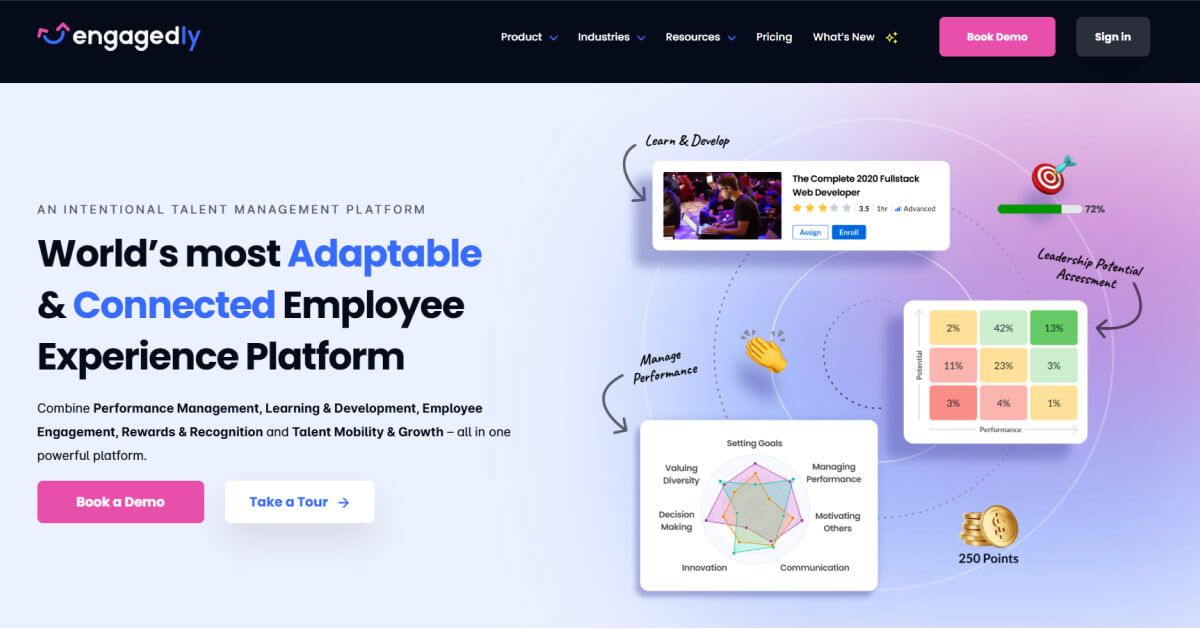
| Feature | Explanation |
|---|---|
| Performance Management Suite | Includes customizable review cycles, 360° feedback, goal management, and integrated 1:1 meetings, enhancing overall performance. |
| Learning and Development Platform | Provides personalized learning paths, compliance training, and integration with extensive course libraries, promoting continuous skill advancement. |
| Employee Engagement Tools | Offers AI-driven communication platforms, engagement surveys, and social platforms to foster a connected and thriving workplace. |
| Rewards and Recognition System | Enhances morale and motivation through public recognition and rewards, creating a culture of appreciation. |
| Talent Mobility and Growth Features | Supports skill identification, tracking, and management, optimizing the talent pool for future success. |
Source: https://engagedly.com/
BambooHR
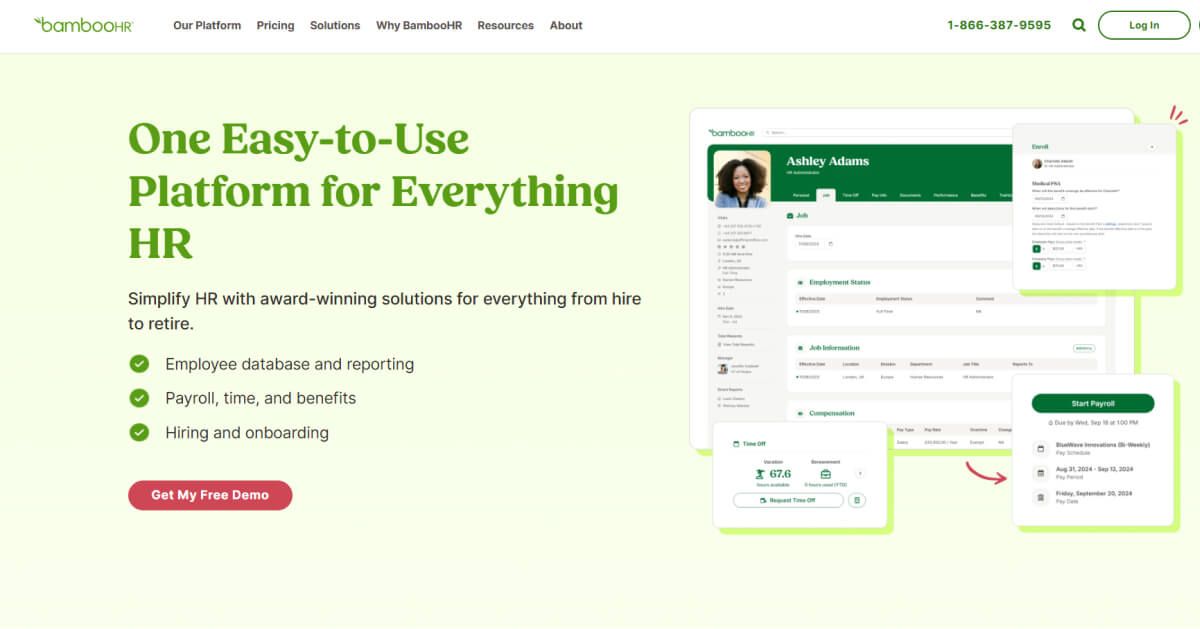
| Feature | Explanation |
|---|---|
| Centralized Employee Database | Consolidates all employee information into a single, secure platform, streamlining data management and accessibility. |
| Applicant Tracking System (ATS) | Facilitates efficient recruitment processes by managing job postings, applications, and candidate evaluations in one place. |
| Onboarding Automation | Simplifies new hire integration with customizable onboarding checklists and electronic document management, enhancing the onboarding experience. |
| Time-Off Management | Allows employees to request leave and managers to approve time-off seamlessly, ensuring accurate tracking and scheduling. |
| Employee Self-Service Portal | Empowers employees to access and update personal information, view pay stubs, and manage benefits, reducing administrative workload. |
Source: https://www.bamboohr.com/
Zoho Survey
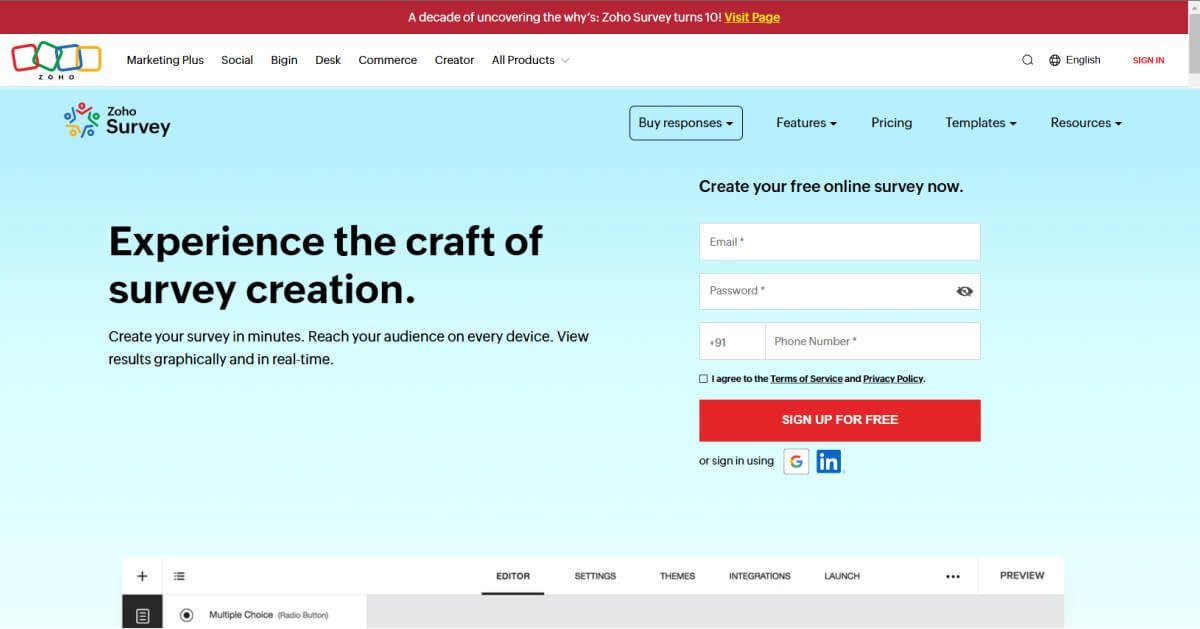
| Feature | Explanation |
|---|---|
| Diverse Question Types | Offers over 30 question formats, including multiple-choice, Likert scale, and open-ended, enabling comprehensive data collection. |
| Customizable Survey Themes | Allows users to tailor survey aesthetics to align with brand identity, enhancing respondent engagement. |
| Advanced Skip Logic and Piping | Enables dynamic survey paths based on respondent answers, ensuring a personalized and relevant survey experience. |
| Real-Time Reporting and Analytics | Provides instant access to survey results with graphical representations, facilitating prompt analysis and decision-making. |
| Multilingual Support | Supports survey creation in multiple languages, broadening reach and inclusivity for diverse respondent groups. |
Source: https://www.zoho.com/survey/
QuestionPro Workforce
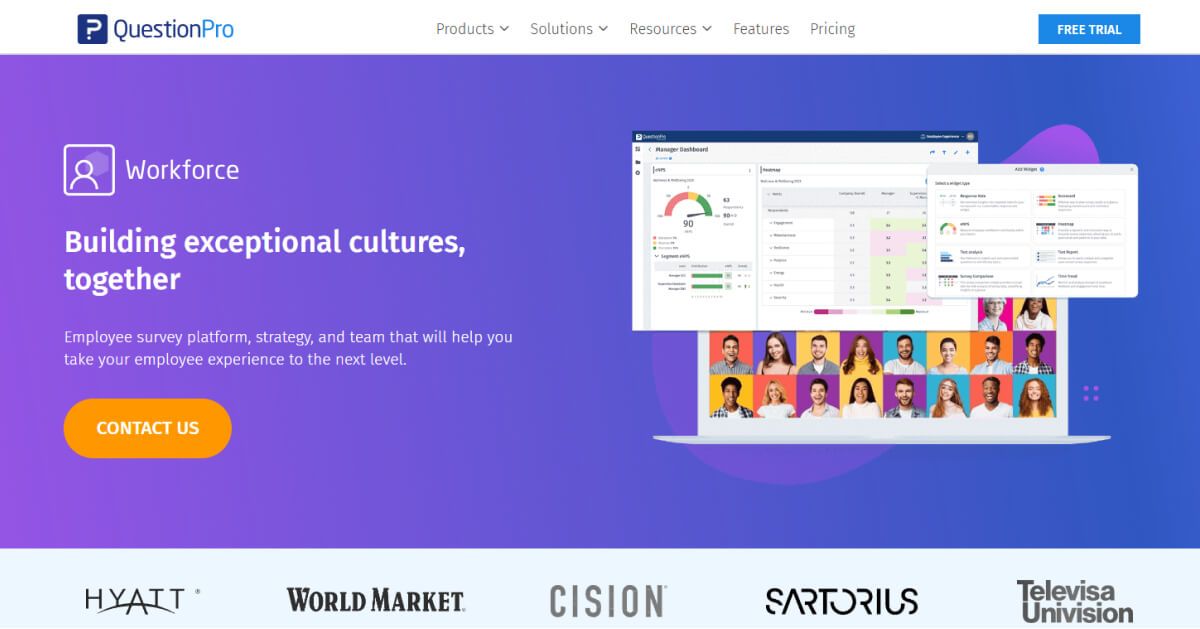
| Feature | Explanation |
|---|---|
| Employee Experience Surveys | Captures feedback across the employee lifecycle, providing insights into engagement, satisfaction, and areas for improvement. |
| 360-Degree Feedback Mechanism | Facilitates comprehensive evaluations by gathering input from peers, subordinates, and supervisors, promoting holistic development. |
| Real-Time Analytics Dashboards | Delivers immediate visualization of feedback data, enabling organizations to monitor trends and make informed decisions promptly. |
| Action Planning Tools | Assists in developing and tracking initiatives based on feedback, ensuring accountability and continuous organizational improvement. |
| Integration with HRIS Systems | Seamlessly connects with existing HR Information Systems, ensuring data consistency and reducing administrative burden. |
Source: https://www.questionpro.com/workforce/
6Q
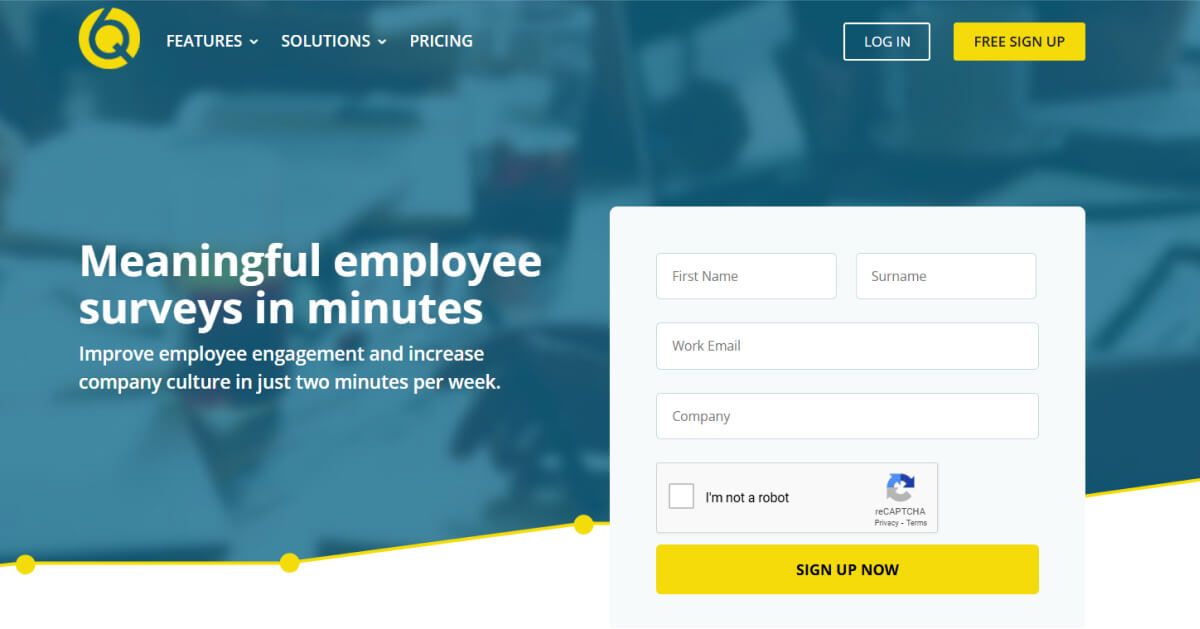
| Feature | Explanation |
|---|---|
| Six-Question Pulse Surveys | Conducts concise, regular surveys to gauge employee sentiment, minimizing survey fatigue and encouraging participation. |
| Peer Recognition System | Enables employees to acknowledge each other's contributions through 'High Fives,' fostering a culture of appreciation. |
| Flexible Survey Scheduling | Allows customization of survey frequency and timing to suit organizational needs, enhancing response rates. |
| Comprehensive Question Library | Provides access to over 200 professionally crafted questions, facilitating effective survey creation tailored to specific objectives. |
| Detailed Reporting and Analytics | Offers in-depth insights into survey results, including sentiment analysis and trend identification, supporting data-driven decisions. |
Source: https://6q.io/
What is the importance of employee feedback?

As we have seen the list of best employee feedback tools out there, now let’s take a look into why employee feedback is critical to the success of any organization.
By using employee feedback tools to gather input from employees and take action to address concerns, organizations can improve communication, increase engagement, and create a more positive workplace culture.
Here is some crucial importance of employee feedback:
- Helps identify improvement opportunities: Employee feedback can help managers and leaders identify areas of the organization that may require improvement. By gathering employee feedback on various aspects of the workplace, such as company culture, communication, and employee benefits, leaders can pinpoint areas where they need to make changes.
- Increases employee engagement: Employees who feel that their opinions and suggestions are valued are more likely to be engaged and invested in their work. By using employee feedback tools to gather input from employees, organizations can increase engagement and create a more productive workforce.
- Enhances communication: Employee feedback software can help facilitate open communication between employees and managers. This two-way communication can help managers understand the needs and concerns of their employees and take action to address them.
- Promotes a positive workplace culture: Employees who feel that their opinions are heard and valued are more likely to have a positive view of the organization and its culture. Feedback tools for employees can help promote a workplace culture of openness and transparency, which can help retain top talent.

- Improves employee retention: Employees who feel that their opinions are valued, and their voices are heard are more likely to stay with an organization for the long term. Organizations can improve employee retention rates by using employee feedback tools to gather input from employees and take action to address concerns.
What are the 3 elements of effective feedback?
1. Specificity
Effective feedback should be precise and focused. Vague or generalized comments can lead to confusion and leave employees unsure about what exactly they need to improve or continue doing. Providing specific examples helps clarify expectations and provides actionable insights. For instance, instead of saying "Good job on the project," specifying "Your attention to detail in the project proposal significantly strengthened our pitch" offers clearer recognition.
2. Timeliness
Providing feedback promptly ensures that the actions or behaviors in question are still fresh in the recipient's mind. Immediate feedback allows for quicker corrections or reinforcement of positive behavior, making it more relevant and impactful. Delayed feedback can lose its effectiveness and fail to drive meaningful change.
3. Constructiveness
Feedback should focus on improvement and be delivered in a positive, supportive manner. Constructive feedback encourages growth by highlighting areas for improvement while acknowledging what was done well. It fosters a culture of learning and engagement, motivating employees to develop their skills.



We all need people who will give us feedback. That's how we improve.
Co-Founder
Microsoft
How employee feedback impacts workplace culture
- Enhances trust and transparency: When employees are encouraged to share their thoughts and see their feedback acted upon, it builds trust between employees and management. Transparent communication creates a culture where employees feel valued and understood.
- Boosts employee engagement and morale: Regular feedback makes employees feel heard and appreciated, increasing their engagement and motivation. Employees who believe their opinions matter are more likely to invest themselves fully in their work.
- Drives continuous improvement: Constructive feedback highlights areas of strength and opportunities for growth, enabling individuals and teams to evolve. This fosters a culture of continuous improvement and innovation.
- Facilitates open communication: Encouraging feedback creates a workplace environment where open dialogue thrives. Employees feel more comfortable voicing concerns, sharing ideas, and collaborating, which strengthens team dynamics and cohesion.
- Identifies and resolves issues quickly: Timely feedback helps pinpoint issues before they escalate. By addressing challenges promptly, organizations can create a healthier work environment and prevent problems from negatively impacting productivity.
- Encourages professional growth: Feedback provides employees with the insights they need to develop new skills and grow within their roles. This focus on development nurtures a culture of learning, where employees feel empowered to improve.
- Promotes accountability and recognition: Feedback reinforces accountability by clarifying expectations and outcomes. Positive feedback and recognition further motivate employees to maintain high performance, while constructive feedback drives accountability for improvement. This creates a balanced and productive workplace culture.
How to get anonymous feedback from employees?
To collect feedback anonymously, companies should always rely on employee engagement survey tools. These tools are specifically designed to ensure anonymity and create a secure environment where employees can share their honest thoughts without fear of reprisal.
By using engagement survey tools, organizations can gather employee feedback, actionable data that provides deep insights into employee sentiment, engagement levels, and areas for improvement. These tools often come with built-in features like data encryption, anonymous response tracking, and robust analytics, ensuring confidentiality and fostering trust among employees.
On the other hand, companies should avoid relying on informal methods such as suggestion boxes, unmonitored online forms, or verbal feedback sessions when anonymity is essential.
These approaches often lack the necessary security measures to protect employee identities, leading to a potential breach of trust. Informal methods may not offer the analytical capabilities required to understand and act on the feedback effectively.
Relying on ad-hoc processes can result in incomplete data, biased insights, or unaddressed concerns, undermining the entire purpose of collecting anonymous feedback. Using specialized engagement tools helps ensure accuracy, confidentiality, and meaningful results that drive positive workplace change.

Reaching 80%+ participation: United Bank’s feedback journey with CultureMonkey
Improve survey participation through anonymity, omni-channel delivery, and action-ready insights.
Download NowWhat are the best ways to get employee feedback?

There are several ways an organization can collect employee feedback. Although, the best feedback survey type depends on the organization's specific goals and needs.
Here are some of the best ways for you to collect employee feedback surveys:
Pulse surveys
Pulse surveys are short, frequent surveys designed to measure employee sentiment and engagement over time. Team pulse check is typically sent out on a regular basis, such as once a week or once a month, and can be completed in just a few minutes. Anonymous pulse surveys are great for quick survey feedback on specific topics or issues.
Engagement surveys
Engagement surveys are longer surveys designed to measure overall employee engagement activities and satisfaction with the workplace. These surveys typically cover a wide range of topics, including leadership, communication, career development, and work-life balance.
Onboarding surveys
Onboarding surveys are used to gather feedback from new employees about their experiences during the onboarding process. These surveys can help organizations identify areas where the onboarding process could be improved and ensure new employees feel supported and engaged from day one.
Exit surveys
Exit surveys are used to gather feedback from employees leaving the organization. These surveys can provide valuable insights into the reasons why employees are leaving and can help organizations make changes to retain their top talent.
Mental health surveys
Mental health is a critical issue in the workplace, and employers are increasingly recognizing the importance of supporting employee well-being. Mental health surveys are designed to assess employees' levels of stress, anxiety, and depression, as well as their perceptions of the workplace's mental health resources and support.
Manager effectiveness surveys
Managers play a crucial role in employee satisfaction, engagement, and retention. Manager effectiveness surveys are designed to gather feedback from employees on their managers' leadership style, communication skills, and overall effectiveness.
Employee Net Promoter Score (eNPS)
The eNPS measures employee loyalty and satisfaction based on the same principles as the Net Promoter Score used in customer feedback surveys. Employees are asked a single question - "On a scale of 0 to 10, how likely are you to recommend this organization as a place to work?" - and categorized as promoters, detractors, or passive.
How CultureMonkey helps you collect and improve eNPS effectively?
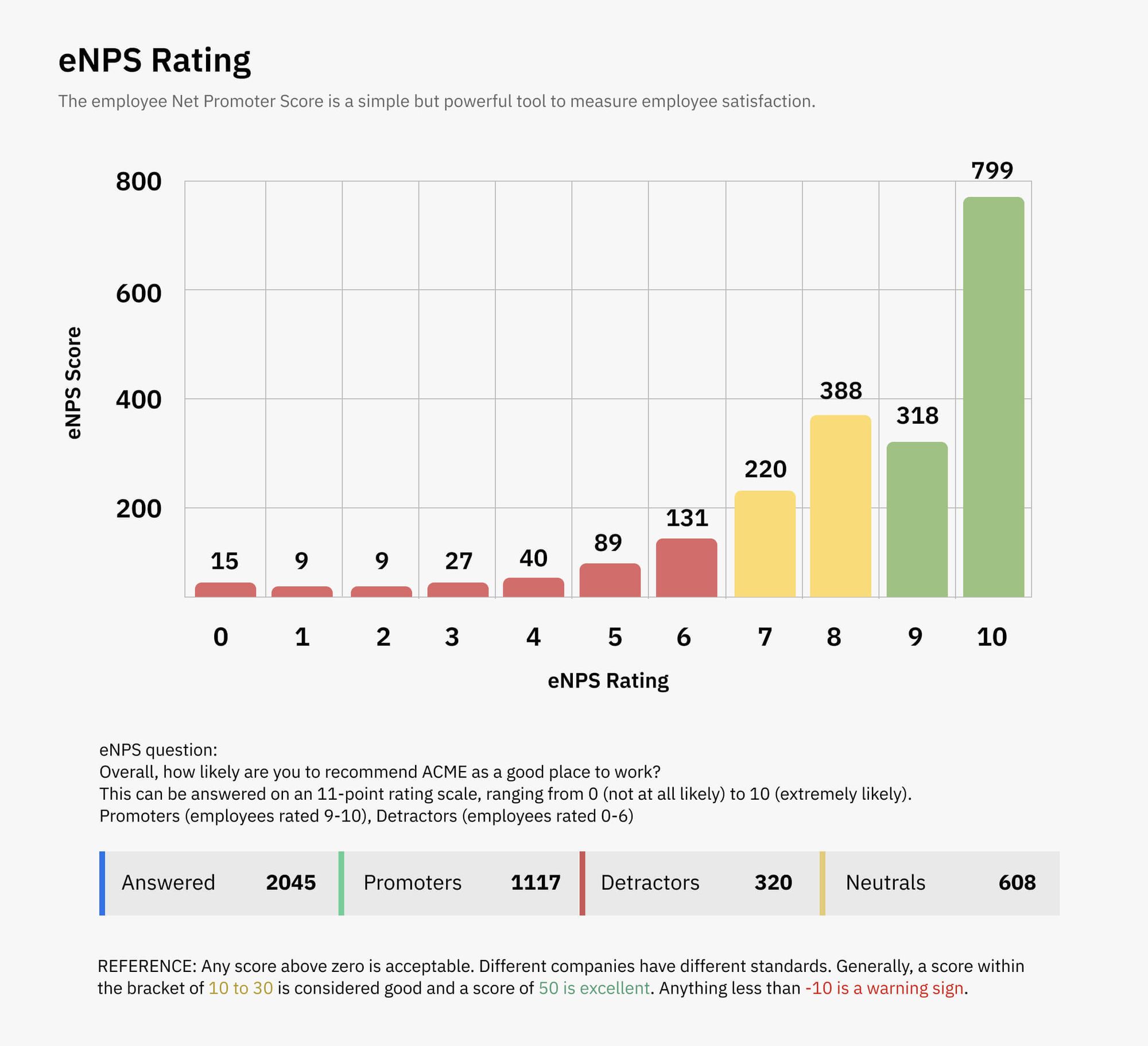
CultureMonkey makes it easy for organizations to collect, analyze, and act on eNPS feedback at scale. Here’s how CultureMonkey helps you streamline eNPS surveys and gain deeper, actionable insights from your employees:
- eNPS dashboard: View response distribution by score and identify promoters, passives, and detractors at a glance.
- Overtime analysis: Track eNPS trends over time to monitor shifts in employee sentiment and engagement.
- Multilingual surveys: Launch surveys in 150+ languages to engage a diverse, global workforce.
- Omni-channel surveys: Send eNPS surveys via email, Slack, MS Teams, and more, wherever your employees work.
- GDPR compliance: Collect and manage feedback in line with global data privacy regulations.

What types of employee feedback can be collected?
- Peer feedback: Involves insights and observations shared by colleagues at the same level. It encourages collaboration, provides diverse perspectives, and strengthens team dynamics.
- Managerial feedback: Empowers employees to provide feedback to managers and supervisors, offering insights into leadership effectiveness. This helps guide manager development, aligns leadership behavior with employee needs, and enhances overall team dynamics.
- Upward feedback: Allows employees to give feedback to their managers or leadership team. It promotes a culture of openness and empowers employees to share their perspectives on leadership.
- 360-degree feedback: Allows employees to give feedback on peers, managers, and the organization as a whole. This creates a holistic view of how leadership, processes, and culture impact day-to-day work and encourages positive change from multiple perspectives.
- Recognition and praise: Highlights accomplishments and positive contributions made by employees. It boosts morale, reinforces positive behaviors, and motivates continued high performance.
- Constructive criticism: Encourages employees to highlight areas where the company, policies, or leadership could improve. Offering actionable suggestions, it opens up a pathway for organizational growth and fosters a culture of continuous improvement.
- Engagement feedback: Gauges how connected and motivated employees feel about their work. It helps measure and improve employee engagement, impacting productivity and retention.
- Survey feedback: Aggregates data from various surveys such as engagement, satisfaction, and pulse surveys. It provides actionable insights to drive organizational improvements and meet employee needs.
- Onboarding feedback: Collects input from new hires about their initial experience with the organization. It helps refine onboarding processes, ensuring a positive and supportive start for new employees.
- Exit feedback: Gather insights from departing employees regarding their reasons for leaving and suggestions for improvement. It identifies areas for retention improvements and helps address recurring issues.
- Developmental feedback: Focuses on providing guidance for professional growth and skill-building. It supports career progression, skill enhancement, and personal development within the organization.
- Feedback on work environment: Covers aspects such as office culture, resources, and overall workplace conditions. It highlights areas for improving workplace culture and resources to foster a better work environment.
- Project-specific feedback: Reviews performance and outcomes specific to a particular project or task. It ensures continuous improvement and helps teams refine processes for future projects.
- Goal-setting feedback: Discusses progress toward established goals and alignment with broader company objectives. It helps track goal progress, make necessary adjustments, and keep employees focused on key outcomes.
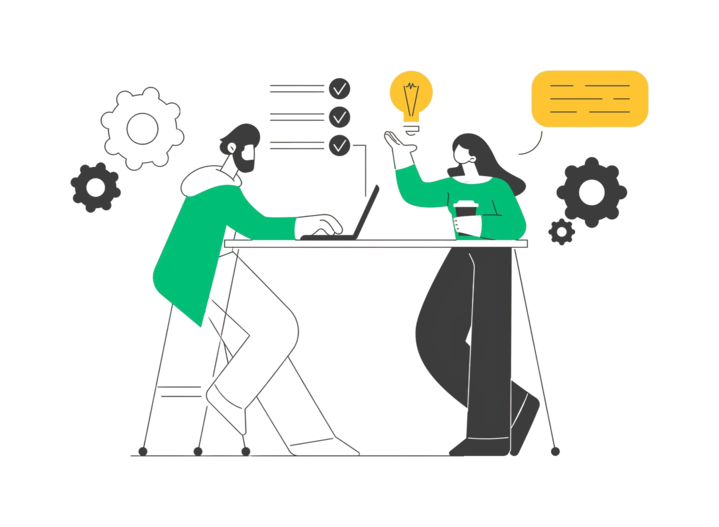
Simplify how you collect and act on feedback
Explore how CultureMonkey turns employee feedback into measurable business outcomes. .
Speak to expertsHow to measure employee feedback?
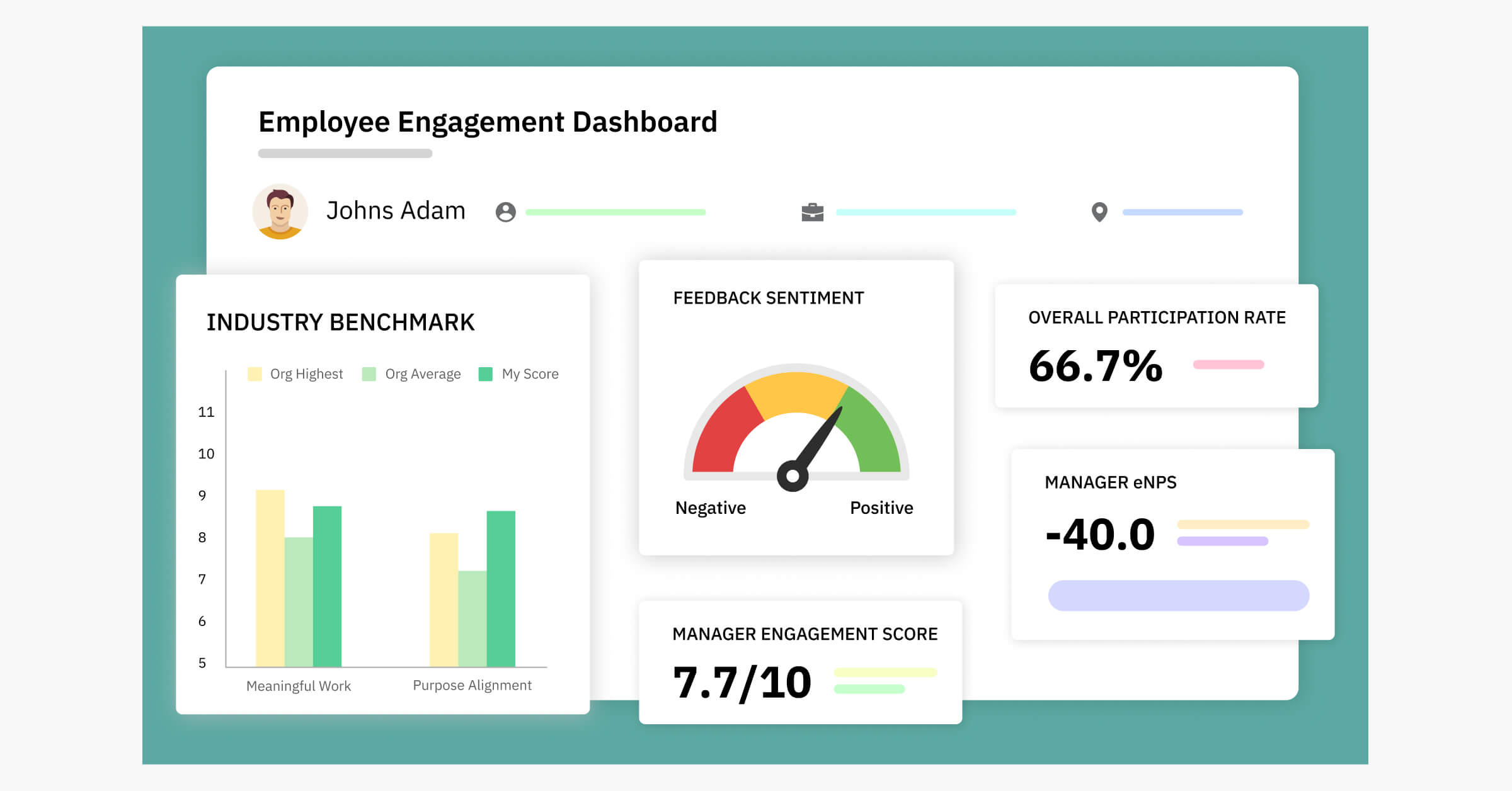
- Analyze qualitative and quantitative data: Begin by breaking down both open-ended responses (qualitative data) and numerical ratings or scale-based answers (quantitative data). Identify recurring themes, trends, and patterns.
- Compare against benchmarks: Use internal and industry benchmarks to assess the collected feedback. This allows you to see how your organization performs relative to past performance and similar organizations.
- Segment feedback by demographics: Categorize the feedback based on employee demographics such as department, role, location, or tenure. This helps identify specific areas where feedback varies, revealing targeted improvement opportunities.
- Calculate engagement and sentiment scores: Use engagement metrics, such as employee Net Promoter Score (eNPS) or employee satisfaction scores, to quantify overall sentiment. Tools like sentiment analysis can further break down the tone of feedback.
- Share results and seek input: Present key findings to relevant stakeholders, including leadership and employees. Openly sharing the results and inviting suggestions for next steps ensures transparency and drives meaningful action based on the feedback.
How can managers improve employee satisfaction with the feedback process?



Feedback is the breakfast of champions.
Co-Founder
Blanchard
- Encourage open dialogue: Foster a culture where feedback flows both ways. Employees should feel comfortable providing input without fear of retaliation or judgment.
- Be specific and actionable: Feedback should be clear, focused, and provide actionable steps. Vague or generic comments are less effective and can leave employees feeling unclear about how to improve.
- Offer regular feedback: Move beyond annual reviews by providing ongoing, timely feedback. Frequent check-ins help employees address issues faster and reinforce positive behaviors.
- Focus on strengths and opportunities: Balance feedback by highlighting what employees are doing well while discussing areas for improvement. This approach boosts morale and motivates employees to continue excelling.
- Tailor feedback to individual needs: Recognize that every employee has different communication preferences and goals. Adjust feedback delivery to meet their unique needs and ensure it resonates.
- Act on feedback received: Demonstrate that feedback leads to meaningful change. When employees see their suggestions being implemented, they are more likely to engage and feel valued.
- Train managers in feedback delivery: Equip managers with the skills to provide constructive, empathetic, and effective feedback. Proper training can significantly enhance the feedback process.
- Follow up on feedback conversations: Revisit previous feedback during follow-up discussions to assess progress and show genuine interest in employees' growth. This demonstrates a commitment to their success and builds trust.
Fun ways to encourage survey participation
- Gamify the survey experience: Add elements of gamification, such as earning badges or completing levels for survey participation. This makes the process enjoyable and engaging for employees. Gamification can create a sense of accomplishment and motivate employees to participate actively, improving response rates and providing a more complete dataset for analysis.
- Offer creative rewards and incentives: Provide rewards such as gift cards, extra vacation days, or fun office perks for completing surveys. This approach makes the survey process more enticing and demonstrates that employee input is valued. Incentives boost participation by showing appreciation for employees' time and effort, leading to more engaged responses and greater feedback accuracy.
- Make it a social event: Host a survey day with snacks, music, and social interactions in the break room or a virtual gathering for remote employees. Creating a positive, team-oriented environment encourages participation and builds camaraderie among colleagues. This social approach turns survey-taking into a memorable experience, reinforcing a sense of community and collective input.
- Incorporate humor and creative themes: Design surveys with humorous questions, themed visuals, or playful language that reflects company culture. This breaks the monotony and makes participation more enjoyable. Injecting humor into surveys lightens the mood and reduces any anxiety around feedback, fostering a more honest and enthusiastic response from employees.
Key features to consider in employee feedback tools

When evaluating an employee feedback tool, it is essential to consider several factors to ensure that the tool meets your organization's needs. Here are some of the top things to consider:
Customization options
Every organization has unique requirements for collecting feedback from employees. Consider whether the tool allows customization, such as creating custom surveys tailored to your organization's needs.
User-friendliness
A feedback tool should be easy to use for both managers and employees. Consider the user interface and whether it is intuitive and straightforward. Look for tools that offer clear instructions and support to ensure the tool is used effectively.
Integration
The feedback tool should integrate with your existing HR software or management systems to ensure feedback is easily accessible and tracked. Look for tools that offer APIs or integration options with popular HR systems.
Reporting and analytics
The tool should provide reporting and analytics features that help you to analyze and interpret the feedback data effectively. Look for tools that offer customizable reporting and analytics options and dashboards.
Security and data privacy
Employee feedback data is sensitive and confidential. Ensure that the tool adheres to strict security and data privacy standards. Look for tools that have encryption, password protection, and data backup options.
Mobile access
Employees should be able to provide feedback from any device, including smartphones and tablets. Look for tools that offer mobile access and are optimized for mobile use.
Support and training
A feedback tool should offer training and support to help managers and employees use the tool effectively. Look for tools that offer customer support and training resources, such as tutorials, webinars, and documentation.
By considering these factors when evaluating employee feedback tools, you can select a tool that meets your organization's needs and helps you collect and analyze feedback from your employees effectively.
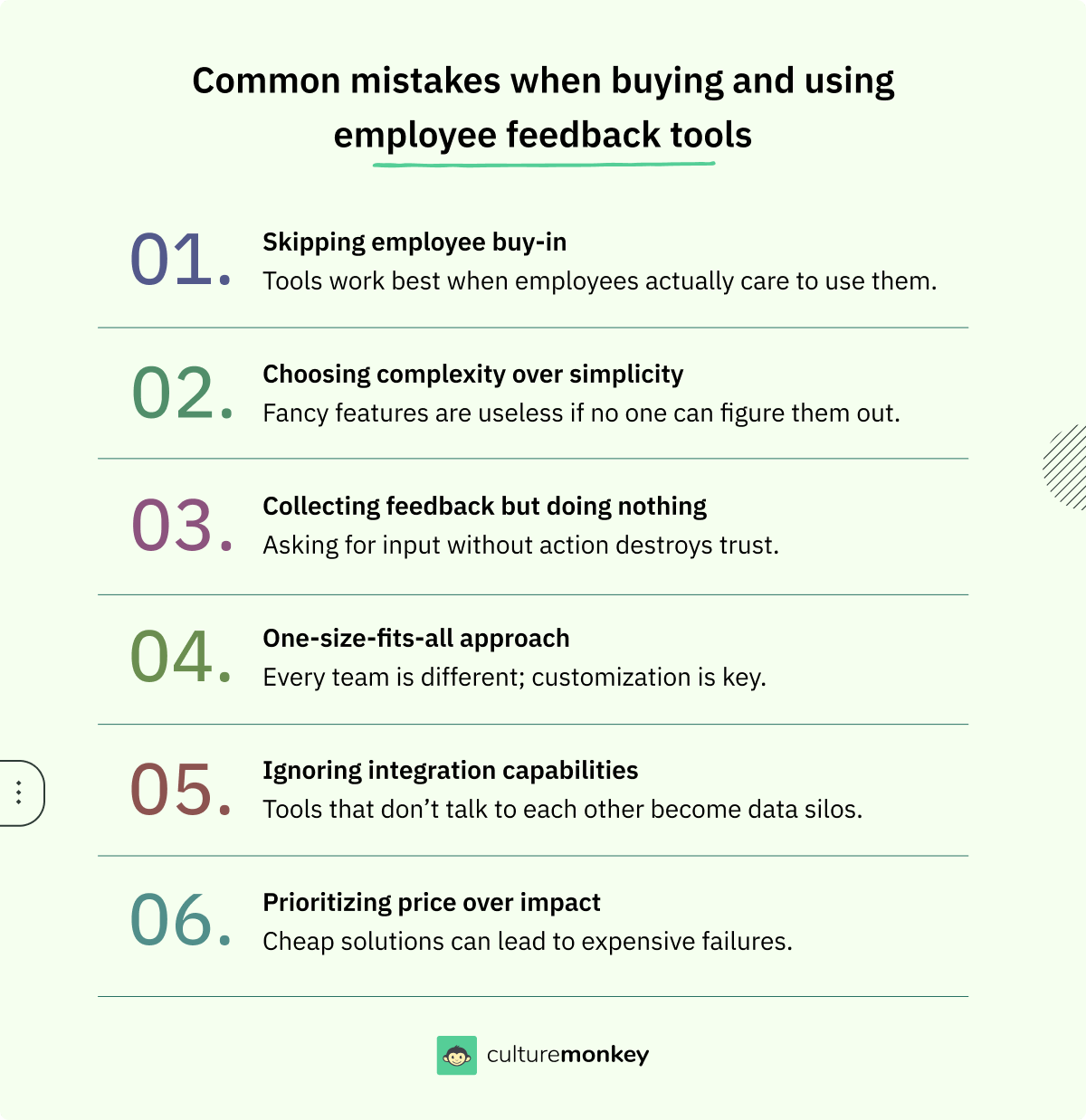
Conclusion
In conclusion, investing in employee feedback tools is crucial for any organization that wants to foster a culture of growth, development, and employee satisfaction. Each employee feedback tool mentioned above has unique features and strengths that cater to specific needs and goals.
However, if you are looking for an employee feedback tool with advanced feedback analysis, AI-powered solutions, and user-friendly survey tools, we'd say a go-to tool would be CultureMonkey! Don't believe us, yet?
Book a demo with us today to know how CultureMonkey offers a personalized touch to surveys, delivers actionable insights, and enables anonymous conversations to help you identify improvement areas and take proactive actions to create a positive work environment.
Don't miss out on the opportunity to transform your organization's culture with CultureMonkey – give it a try today!
FAQs
1. How do employee feedback tools improve manager effectiveness?
Employee feedback tools empower managers with real-time insights into team sentiment, performance barriers, and engagement drivers. By surfacing anonymous feedback and trend analytics, they help leaders tailor communication, recognize contributors, and address concerns early—building trust, accountability, and higher-performing teams through data-driven coaching and actionable insights.
2. What features should enterprise-grade employee feedback tools include?
Enterprise-ready employee feedback tools should offer multilingual support, HRIS integrations, pulse and lifecycle surveys, role-based dashboards, and AI-powered analytics. They must ensure data privacy, customization, and scalable reporting so HR and leadership teams can gather, analyze, and act on workforce sentiment across global offices securely and efficiently.
3. How can employee feedback tools link engagement data to business outcomes?
Modern employee feedback tools correlate engagement scores with metrics like retention, productivity, and customer satisfaction. Through regression analysis, sentiment mapping, and benchmarking, HR leaders can connect people insights with measurable ROI—proving that stronger engagement directly drives performance, innovation, and long-term organizational growth.




